Sneaker reviews: Nike Basketball wear test provides hardwood answers

A sneaker sitting in a box or donning feet for fashion doesn’t exact the same needs as one hitting the hardwood for real hoops use. Nike—and subsidiary Jordan Brand—knows how to sell basketball sneakers, whether for fashion or hardwood. The numbers tell the story, as the two groups combine for over 95% of all basketball sneaker sales in the U.S. LeBron James leads the way. Kevin Durant and Kobe Bryant help keep pace. With those three big sellers—not to mention the new Kyrie Irving signature—what’s the Nike Basketball shoe for you, assuming, of course, you plan to hit the hardwood?
SI.com did a wear test of some of Nike’s (not Jordan Brand, mind you) most popular models, weighing the pros and cons of each shoe. Each signature shoe has multiple lines, sometimes coming in “Elite” materials, differing low top vs. high top cuts and more. For simplicity, we reviewed the mainline model of each shoe.
- MORE: SI.com's Sneaker Hub: All the latest news, releases and more
LeBron 12
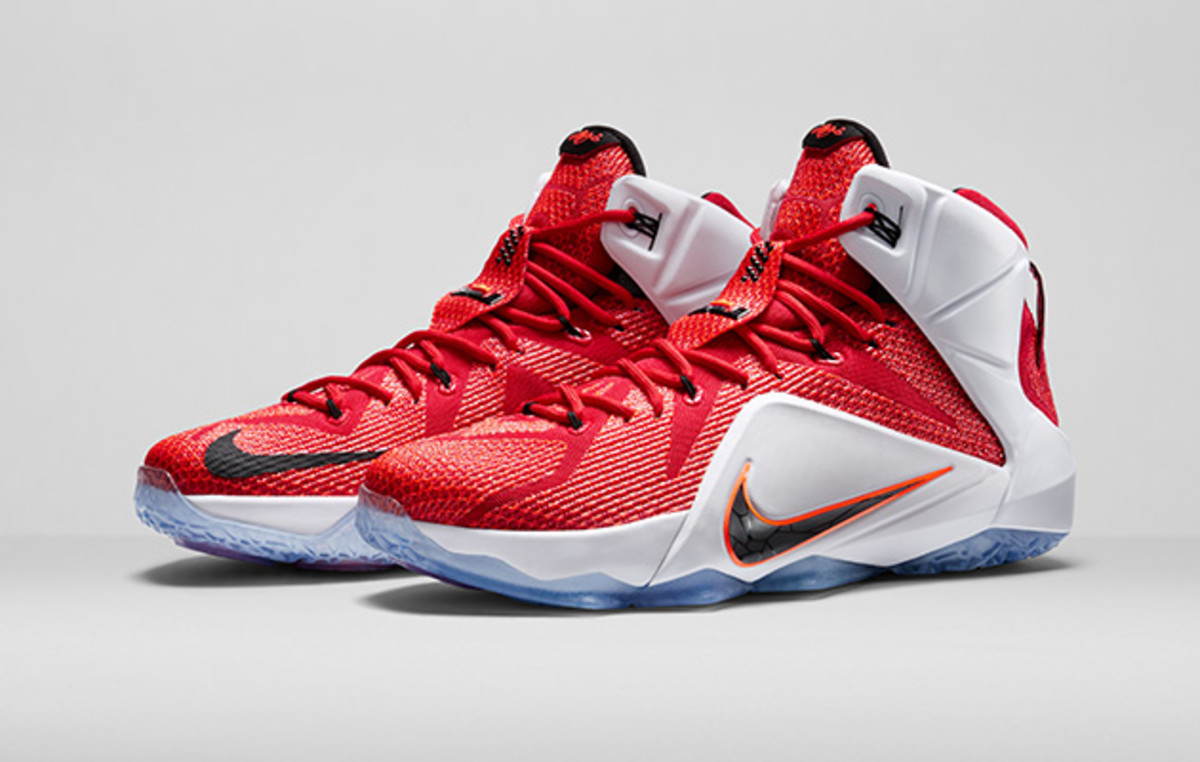
Twelve shoes in and Nike still brought out something completely new when it unveiled the LeBron 12 in Fall 2014. The new-to-Nike hexagonal Air Zoom cushioning system was mapped to specific pressure points under the foot.
Using air cushioning in Nike basketball shoes sets them apart from the other brands. And while some Nike shoes mix and match the air and the foam (or skip air altogether), the LeBron 12 fully embraces the air—for a complete breakdown on basketball cushioning, read this story—with the new pattern.
On the court, the air cushioning doesn’t have the same give as a foam, but it does provide stability. You can feel the thick footbed underfoot that provides comfort and cushioning, even if not plush.
The high top provides stability that combines with the footbed for an overall sense of security.
While lighter on your foot than you might originally think, the LeBron 12’s deficiency lies in a slightly loose feeling during more guard-like cuts and moves.
Baseline thought: The LeBron 12 proves solid, stable cushioning, especially for non-guards and big men.
KD7
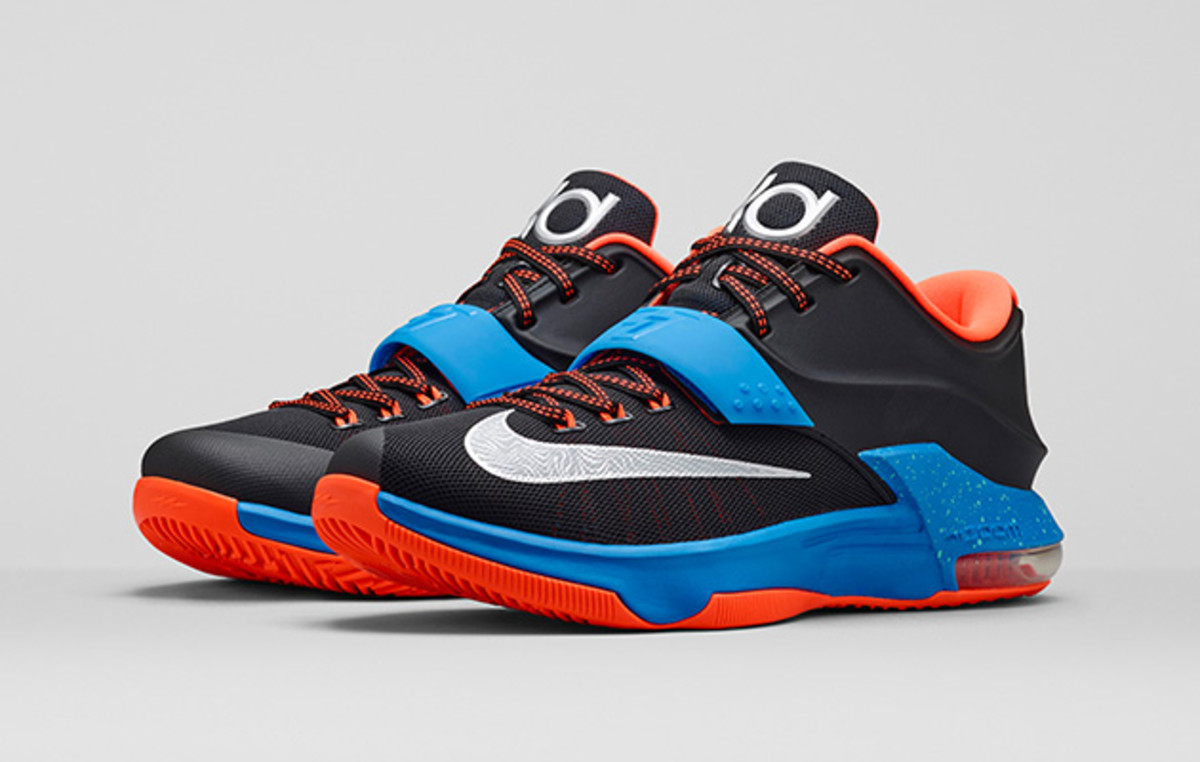
The KD8 isn’t far from us, the first of the new signature models that Nike will unveil over the next footwear season. But it isn’t out yet, so let’s focus on the KD7, still available now and even once the new option hits shelves.
The strap—the main aesthetic component of the KD7—is more than just fun Velcro: it serves a performance purpose. The ability to tighten the feel, or loosen as the case may be, over the midfoot helps in providing lockdown stability in a way you won’t find from many other basketball shoes.
The KD7 pushes you forward, allowing for quality lateral cutting. The low top cut also creates freer movements, all while keeping you locked in with Flywire and the strap, giving a quality stability quotient in a low top, a strength that some other low top shoes may lack.
The Zoom Air cushioning doesn’t free up as much movement as you would have with a foam, so don’t expect an overly comfortable ride, even thought there is still a softness to the shoe.
Baseline thought: The KD7 offers a quality feel for the medium-range player, similar to KD himself. While not a pure guard shoe, as we’ll see from the Kyrie 1, and not a big-man shoe, the mix of freeing lateral movements and low top lockdown merge with cushioning and support.
Kobe X
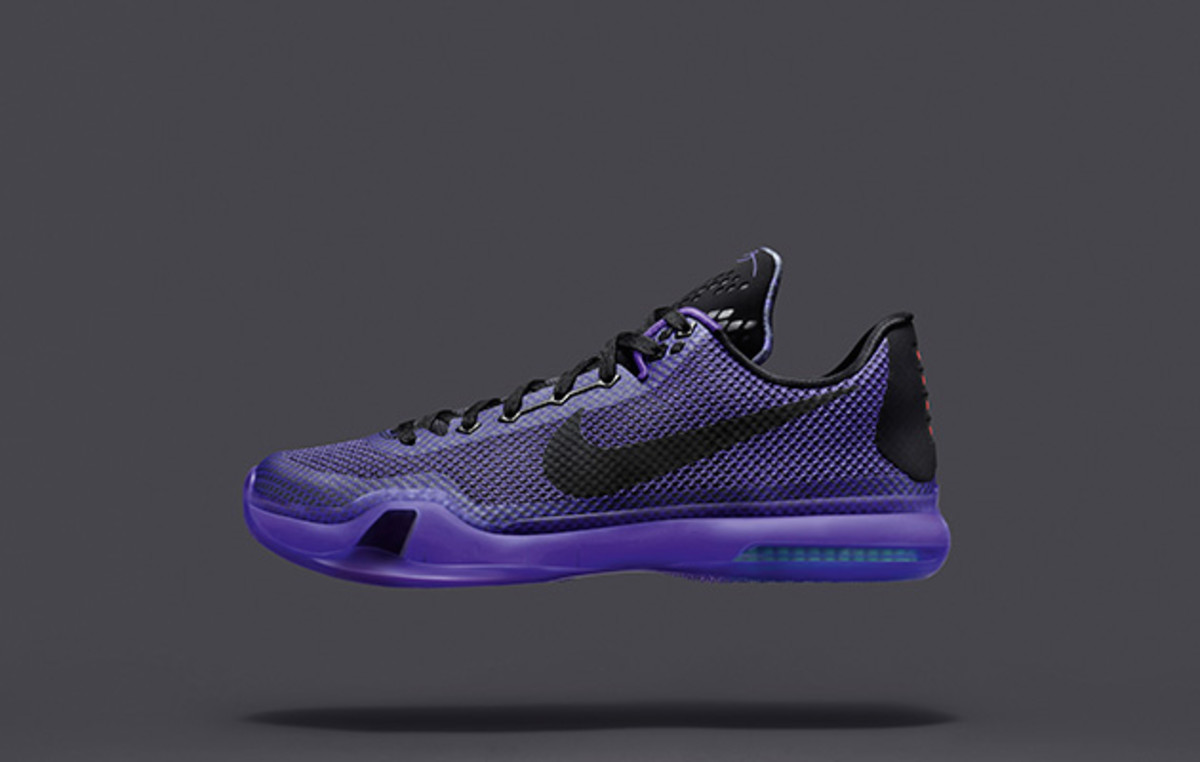
The Kobe X has it all, the pinnacle feeling of a Nike Basketball sneaker.
The combination of Lunarlon foam through the majority of the footbed and Zoom Air on the heel provides solid comfort that will last. A reinvented traction pattern combined with flex grooves in the outsole gives the Kobe X tremendous traction ability while allowing the foot to move freely.
A carbon fiber shank in the midsole provides the stability and response during movement other low tops may lack, but still with that solid footbed feel bigger players may require.
A half inner sleeve helps with lockdown feeling and ups the level of comfort. There’s more stability in this low top than you’d expect, especially while enjoying the most natural fit in the Nike line.
Baseline thought: For this tester, nothing felt better than the Kobe X. There isn’t a single area the Kobe X proves deficient, all while giving some top-level comfort, stability and traction.
Kyrie 1
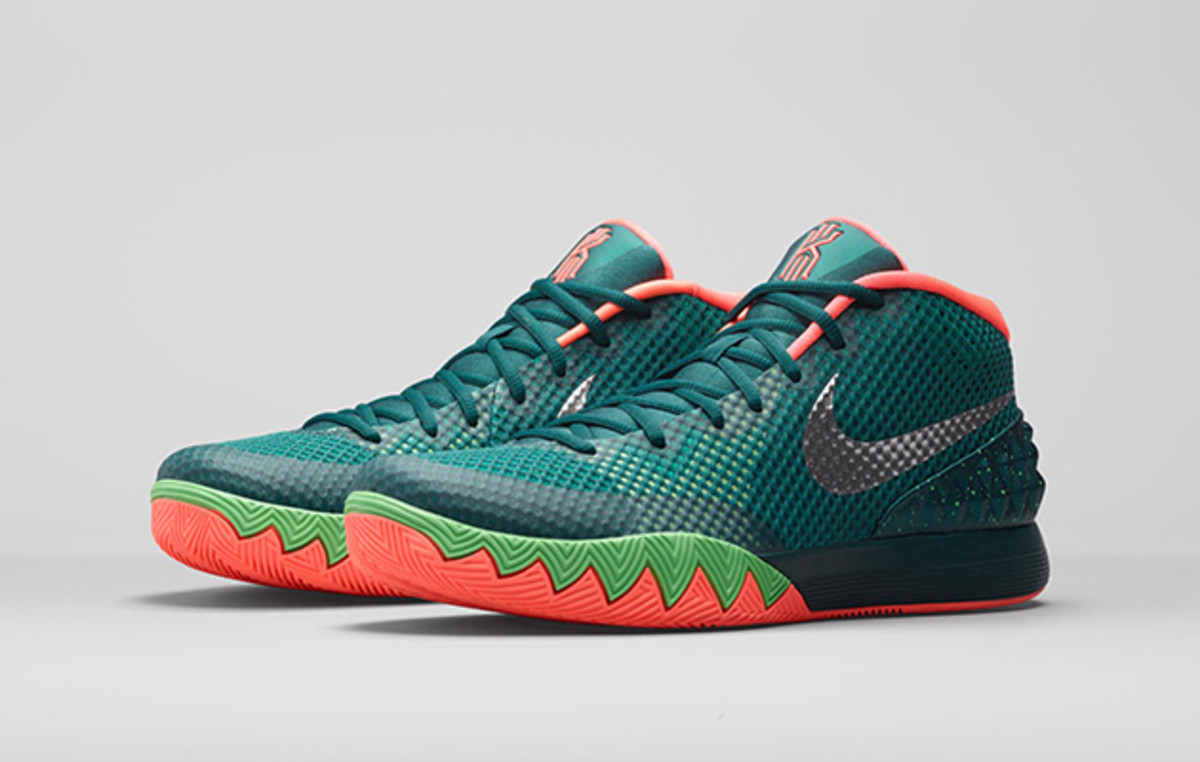
If you’re looking for a shoe for a quick-moving, fast-cutting guard, the Kyrie 1 knows how to match your style. One of the newest in the Nike line, the first signature shoe for Cleveland guard Kyrie Irving was designed around his fast-moving game.
The superior traction sets this shoe apart. Nike says the modified herringbone pattern wraps the sidewalls for maximum traction. This sounds like a fun—if not, superfluous—feature, but on the court you can actually feel the traction, even up the sides, providing incredible lateral movement for a shoe that sits closer to the ground than any other.
The low-cut variety doesn’t offer ankle support, but the lower fit is freeing on the court, allowing for a natural movement of the foot and ankle. Fit-wise, still expect a lockdown feel, especially in the forefoot, and in a molded heel counter.
The one drawback to the Kyrie 1 on the court is the Phylon foam in the heel lacks comfort. And the Nike Zoom unit in the forefoot isn’t a plush cushioning experience.
Baseline thought: Lightweight and quick-moving, the traction and lateral movement construction on this natural-feeling shoe is top-notch, even if you have to sacrifice comfort cushioning to get there.
Hyperposite
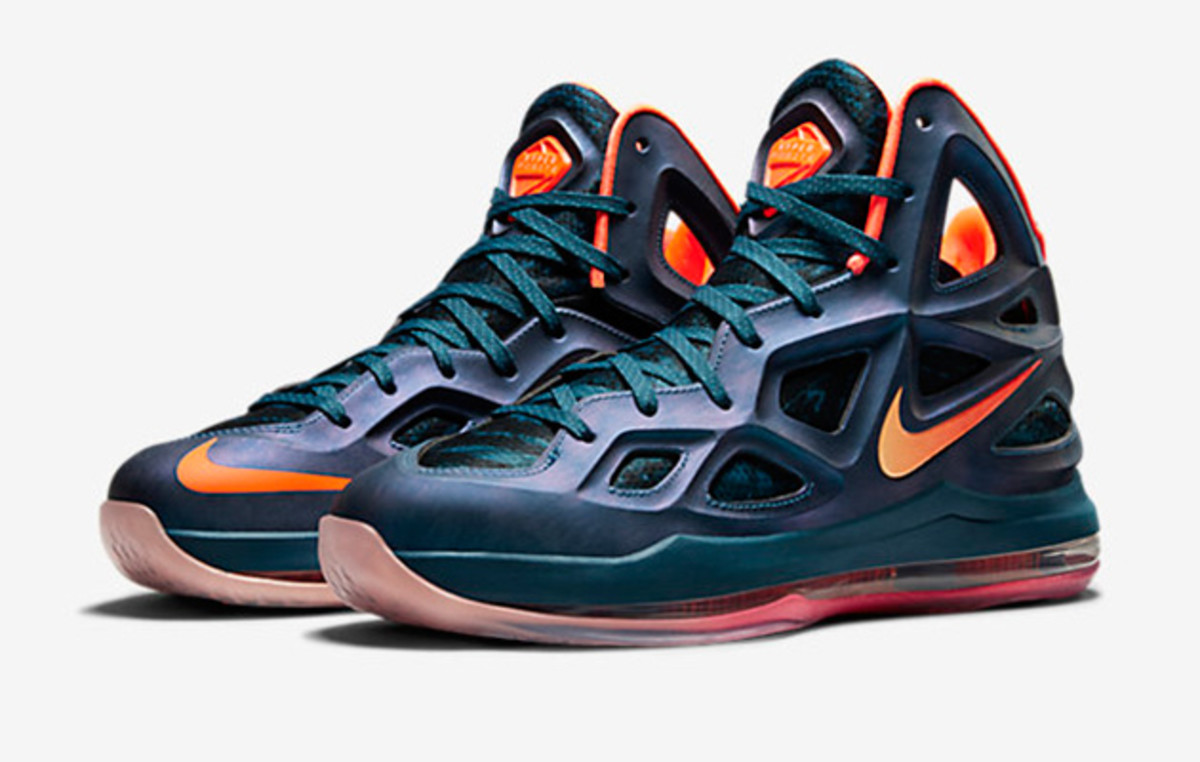
At first glance, the Hyperposite is a lot of shoe. There’s no sleekness to the look, leading you to think it will prove enormous once it's on the foot. And while an inner sleeve takes some of the size concerns away, the Hyperposite still feels clunky and heavy on a smaller foot.
That said, the inner sleeve does provides a tight fit, and the combination of Max Air and foam under the heel provides a intensely cushioned footstrike. There’s cushioning throughout this shoe that mixes Nike’s Hyperfuse and Foamposite construction, even adding cushioning in the collar.
For the big man, this shoe provides a ton of stability, lockdown feel and comfort, but guards may not like the bulk and seemingly limited ability to cut quickly.
Baseline thought: The Hyperposite gives support and cushioning for players who focus on those attributes, but don’t expect this to be a quick player’s shoe of choice.
Hyperdunk
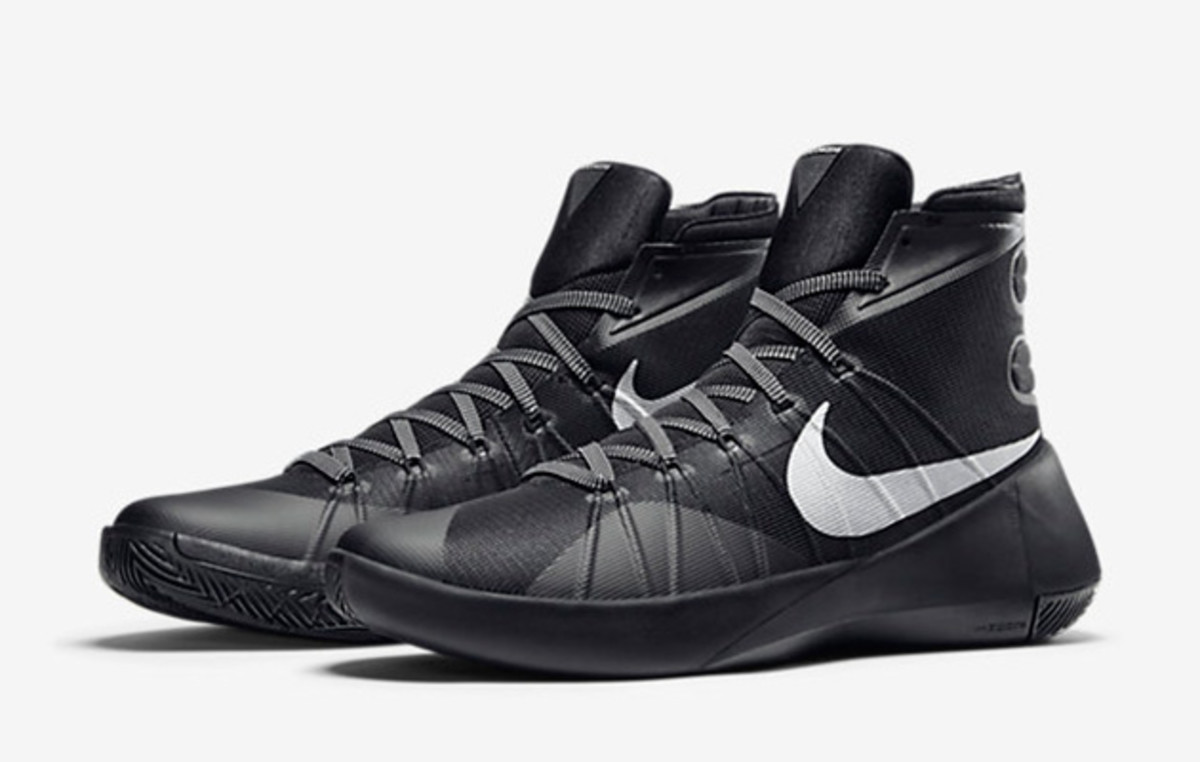
Visit any high school gymnasium in the country and you’ll find plenty of Hyperdunk shoes in an array of colors. And there’s a reason for this: The Hyperdunk is a solid all-around shoe.
While many in the Nike line excel in some areas, giving up something in others, the Hyperdunk has the feel of Mr. Mainstay, decent in every category, but not excelling in any.
For cushioning, the full-length Lunarlon is a step up from Phylon and feels plusher out of the box than air, but will wear out over time quicker. The construction mixes in Flywire to give the Hyperdunk a nice lockdown feel, especially for a high top.
On the court, the lightweight shoe provides decent stability, but not an amazing feeling of security. And while comfortable, the Hyperdunk isn’t the most comfortable in the Nike line. Resting on the footbed, there’s stability, but a sense of thinness the light feel.
Baseline thought: The Nike Hyperdunk could be the most above average basketball sneaker out there, versatile for any position and any need. For those in need of an all-around basketball sneaker, there’s no deficiency in the Hyperdunk. Just don’t expect to be wowed.
Final shot
The KD7 still provides a solid tweener shoe, the Hyperposite gives cushion as needed and the Hyperdunk can’t be overlooked, but the results of this wear test set three shoes above the line. The LeBron 12 shows why it sells well, as a strong shoe for mid-sized and bigger players. The Kyrie 1 should be the new choice for quick-moving guards. But, in the end, any player would be hard-pressed to find a combination better than the Kobe X.
Tim Newcomb covers stadiums, design and gear for Sports Illustrated. Follow him on Twitter at @tdnewcomb.
FULL GALLERY:Air Jordans Over the Years
Air Jordans Over the Years
Air Jordan I
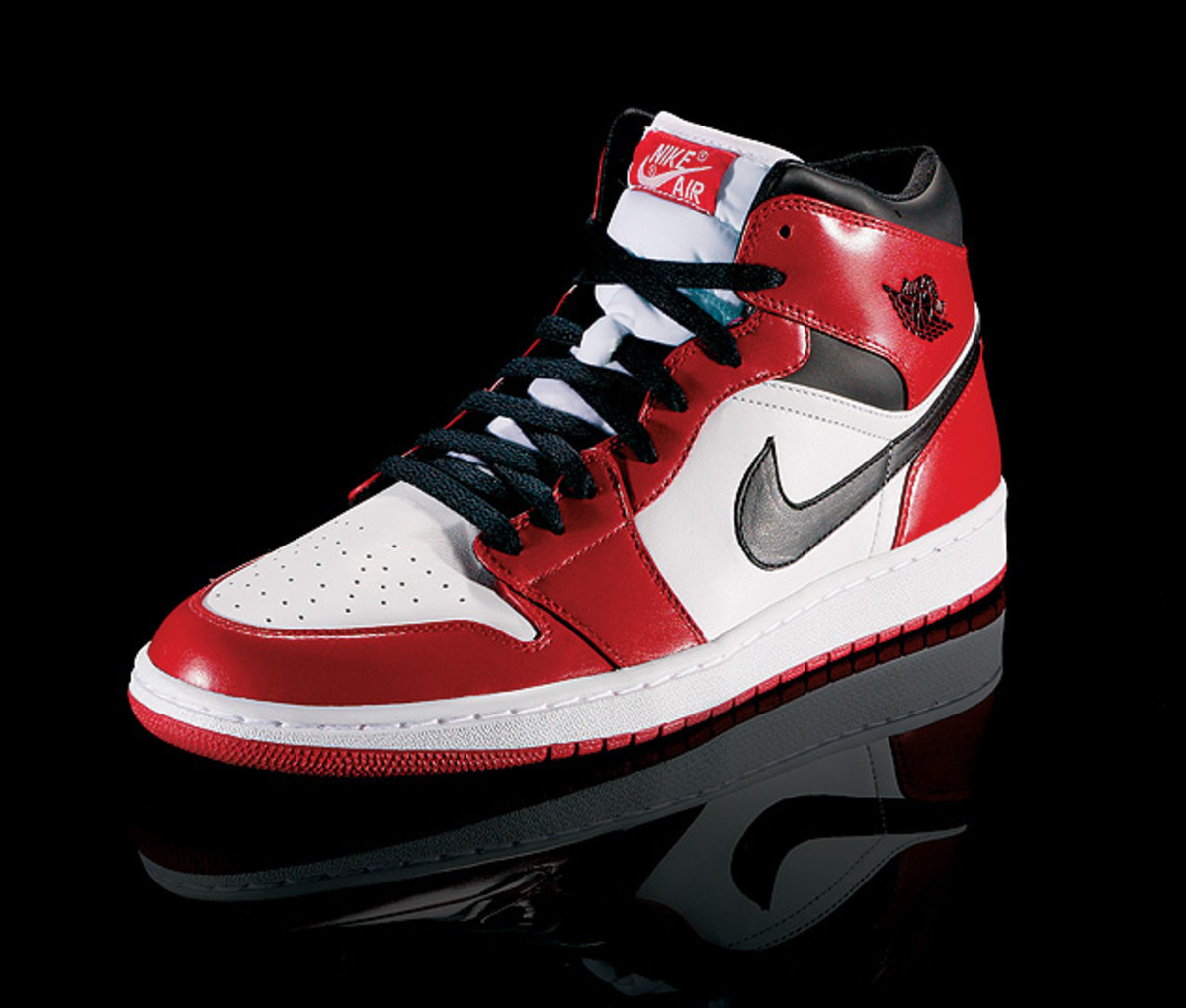
An aesthetic-forward design and the latest in basketball shoe technology has signified the signature shoe of Michael Jordan since its inception during MJ's rookie year. The Jordan XX9, the latest in the long line of Jordans, continues that focus. Walk through the 29 Jordan shoes -- from the original Air Jordan I that was outside NBA regulation and incurred a fine every time MJ wore it to the introduction of the Jumpman logo in the Jordan III and the patent leather of the Jordan XI to the carbon plate in the XX9 -- in this Jordan-centric gallery.
Air Jordan II
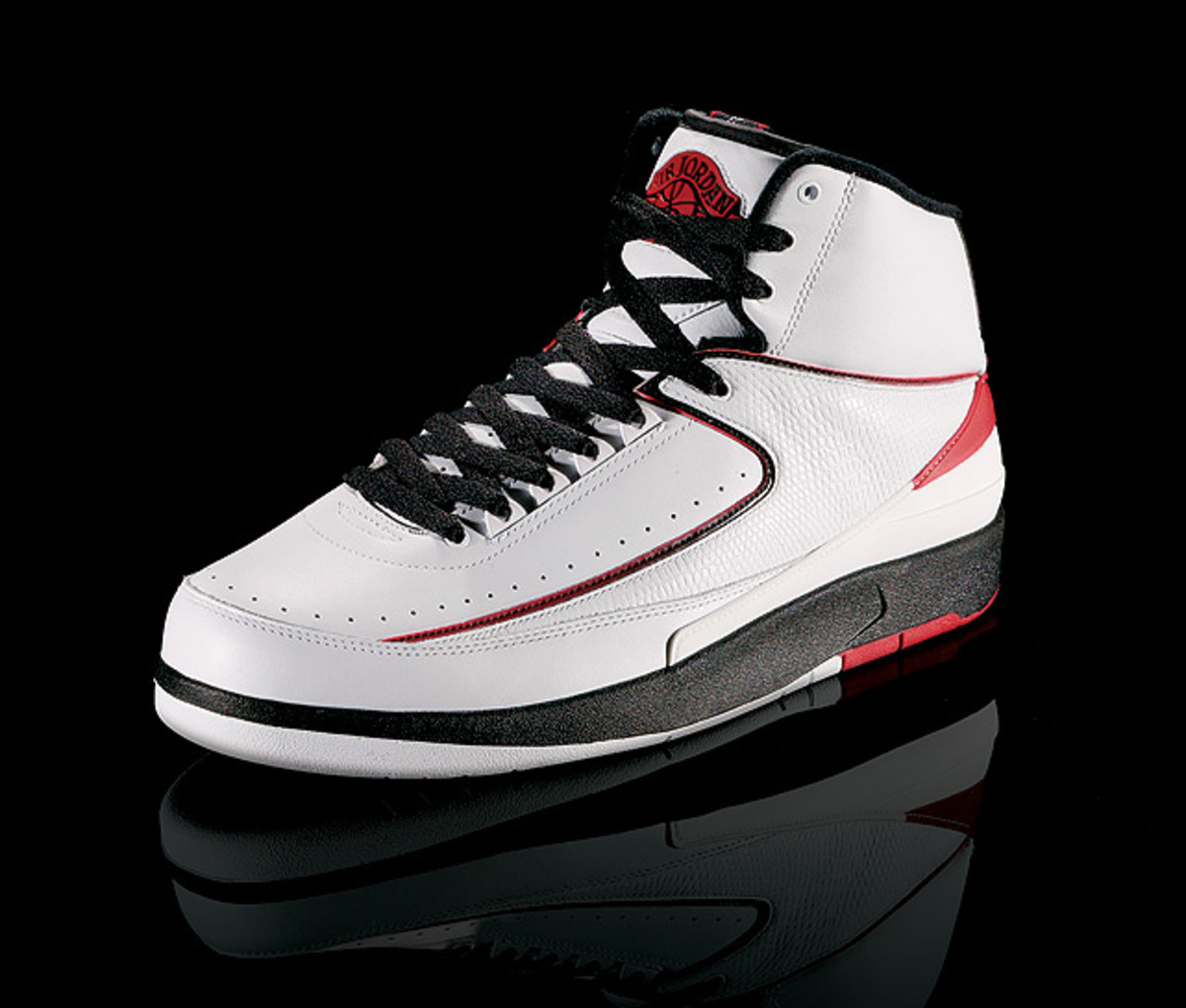
Following the success of the Air Jordan I, Nike released the Air Jordan II, a stylish kick with faux lizard skin that Jordan wore as he averaged 37.1 points during the 1986-87 season.
Air Jordan III
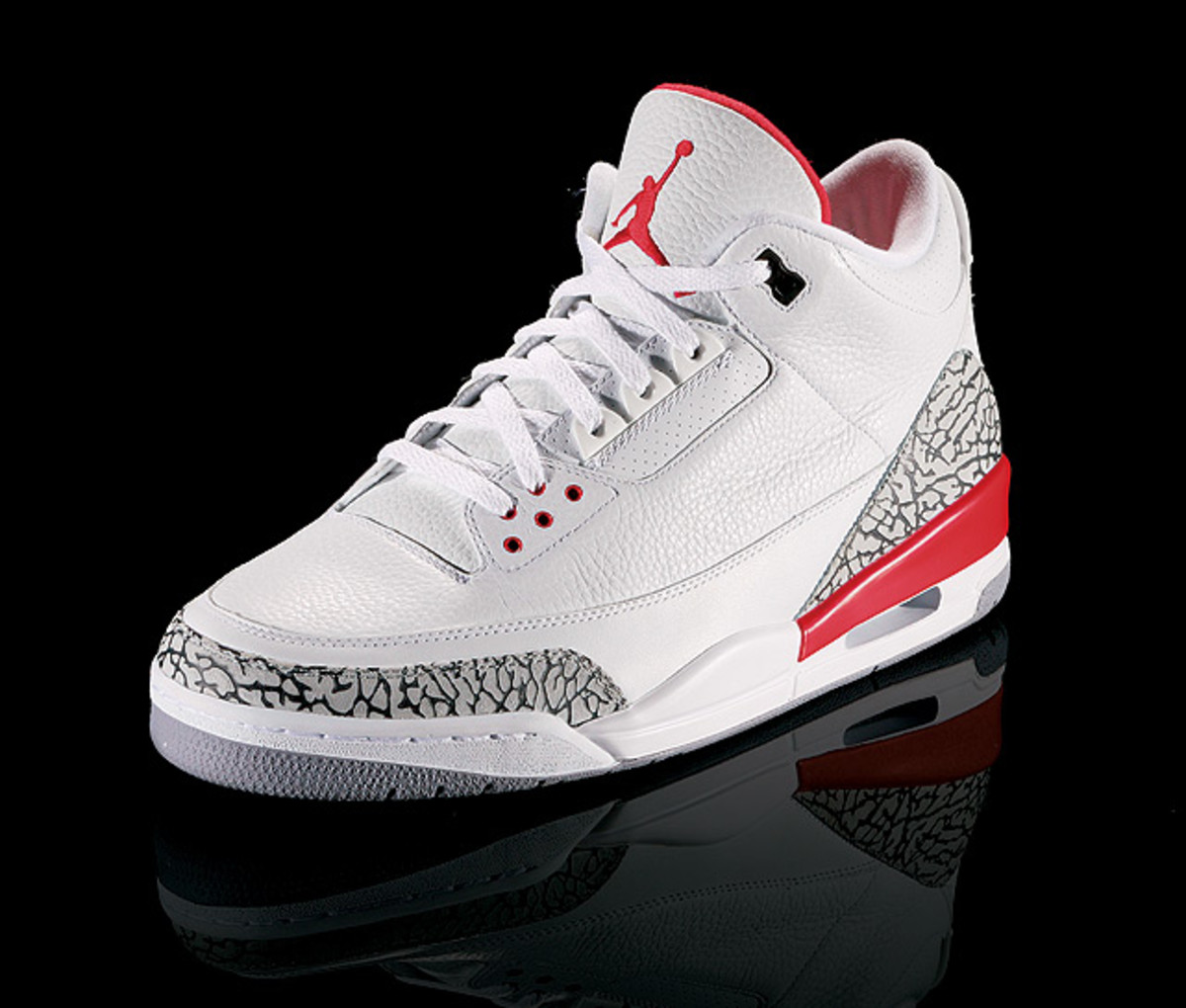
The first sneaker to bear the 'Jumpman' logo, the Air Jordan III was reportedly Jordan's favorite sneaker. While wearing them, he won his second straight dunk contest and his first NBA MVP.
Air Jordan IV
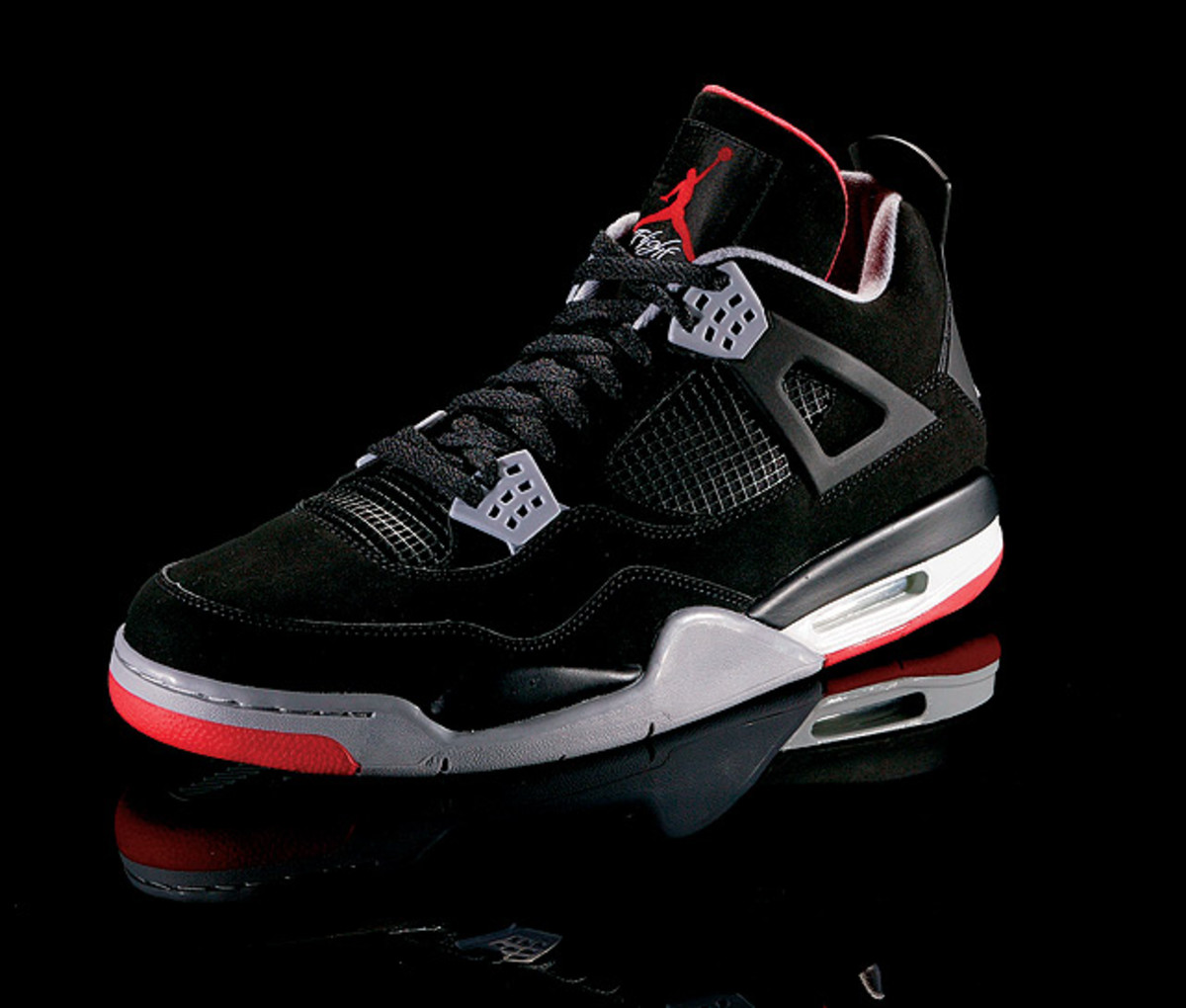
The Air Jordan IV was the first Jordan shoe released on the global market, where it became an international bestseller. Jordan had the shoes on for "The Shot" in Game 5 of the first round of the Eastern Conference playoffs.
Air Jordan V
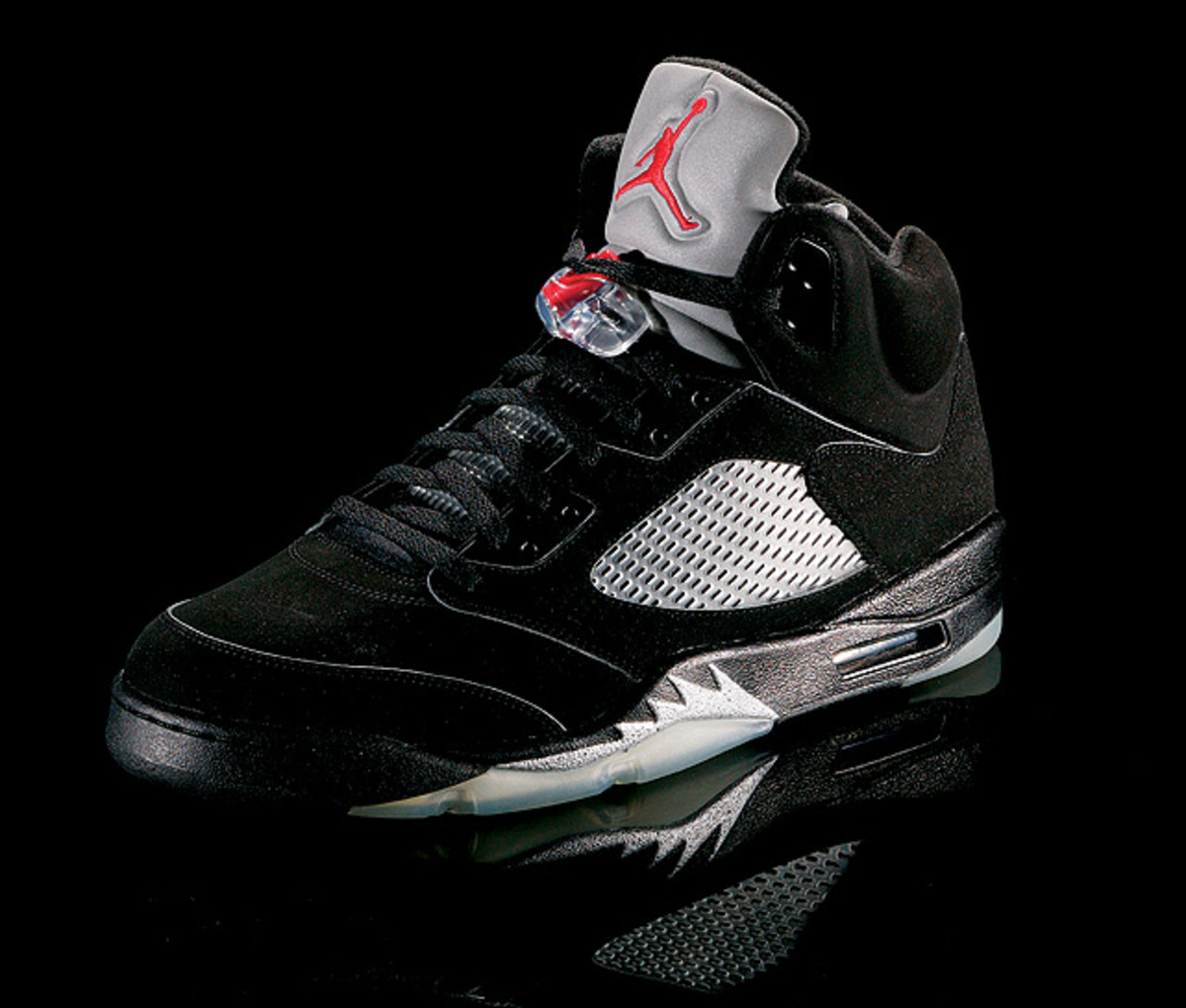
Designer Tinker Hatfield said he drew inspiration for the Air Jordan V from WWII fighter planes. While in the shoes, Jordan won his fourth scoring title and went for a career-high 69 points against the Cavaliers.
Air Jordan VI
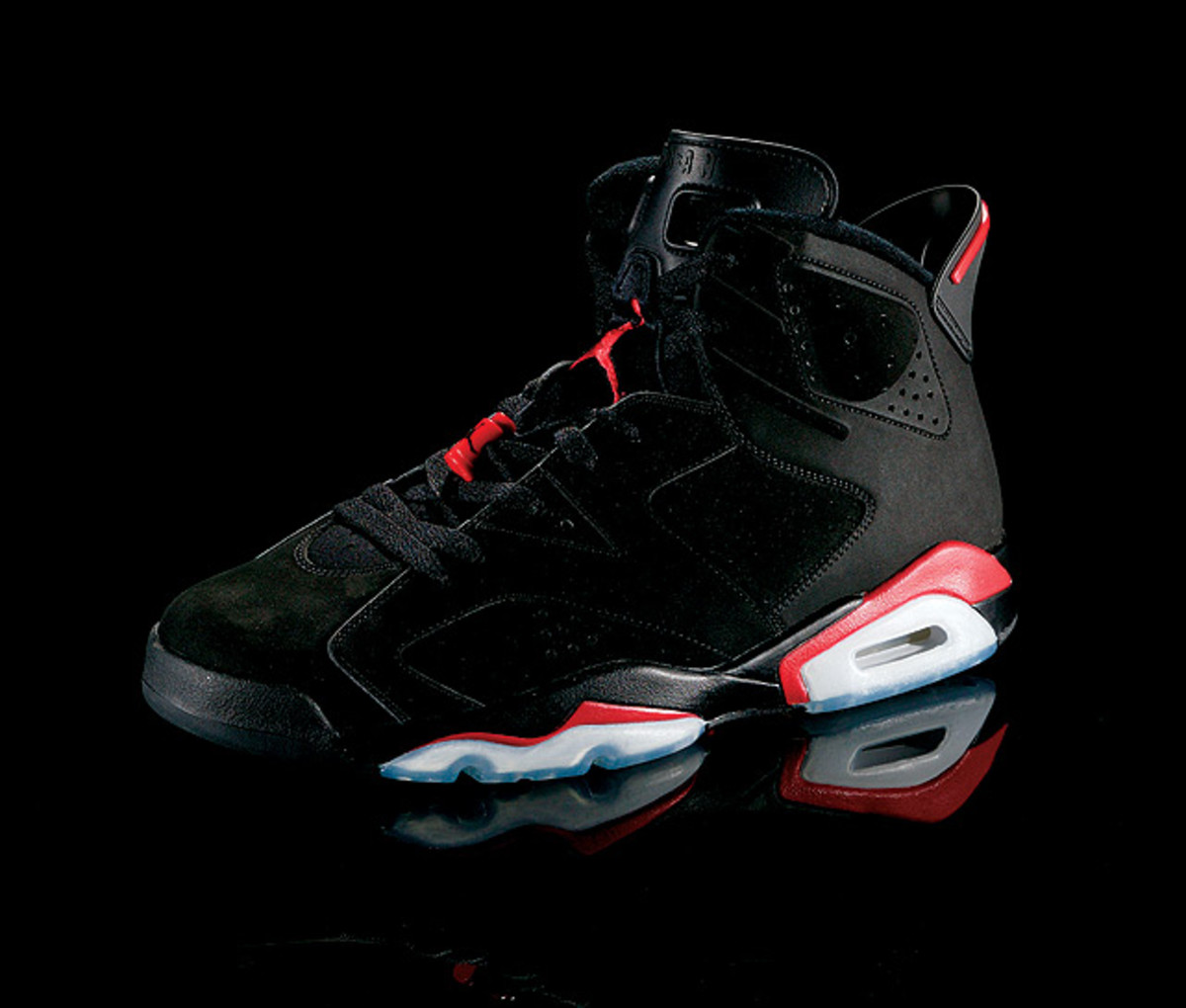
Released in 1991, the Air Jordan VIs were on Jordan's feet when he won his first NBA title.
Air Jordan VII
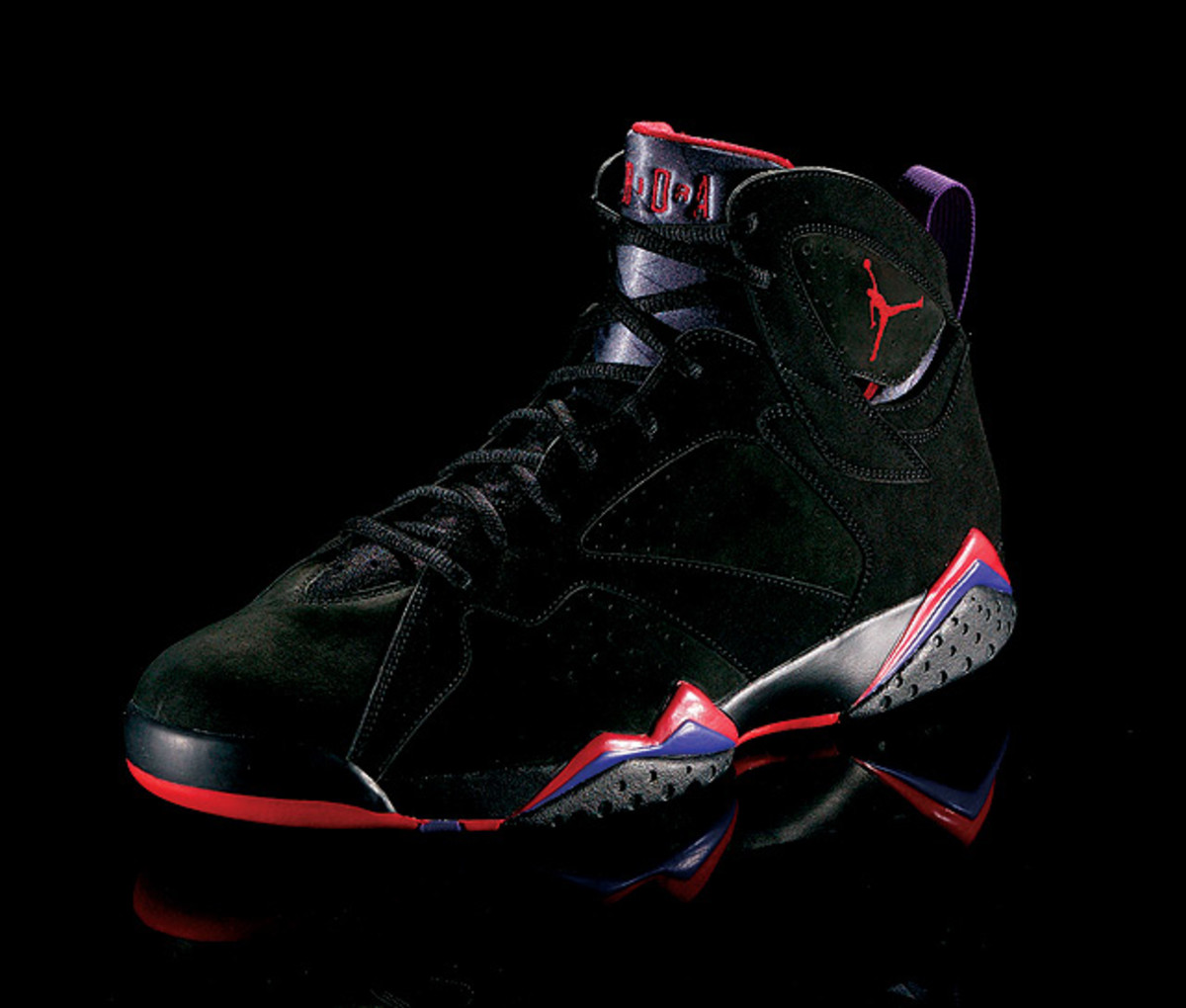
Jordan won his second straight title with the Jordan VIIs on his feet and, later that summer, brought an Olympic-themed version with him to the Barcelona Games.
Air Jordan VIII
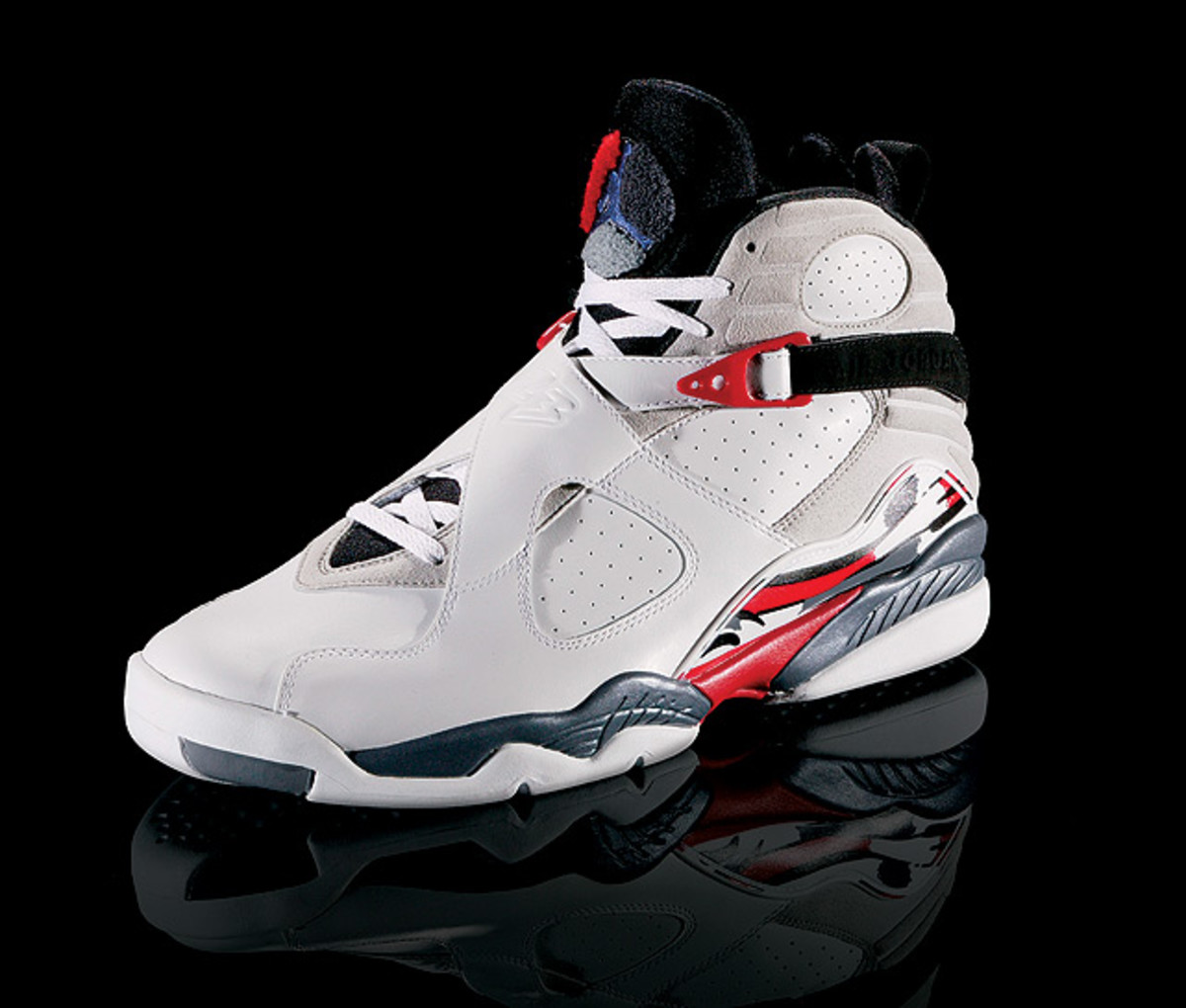
The Air Jordan VIII was noticeably heavier than previous versions, featuring enhanced ankle support and a unique fuzzy tongue.
Air Jordan IX
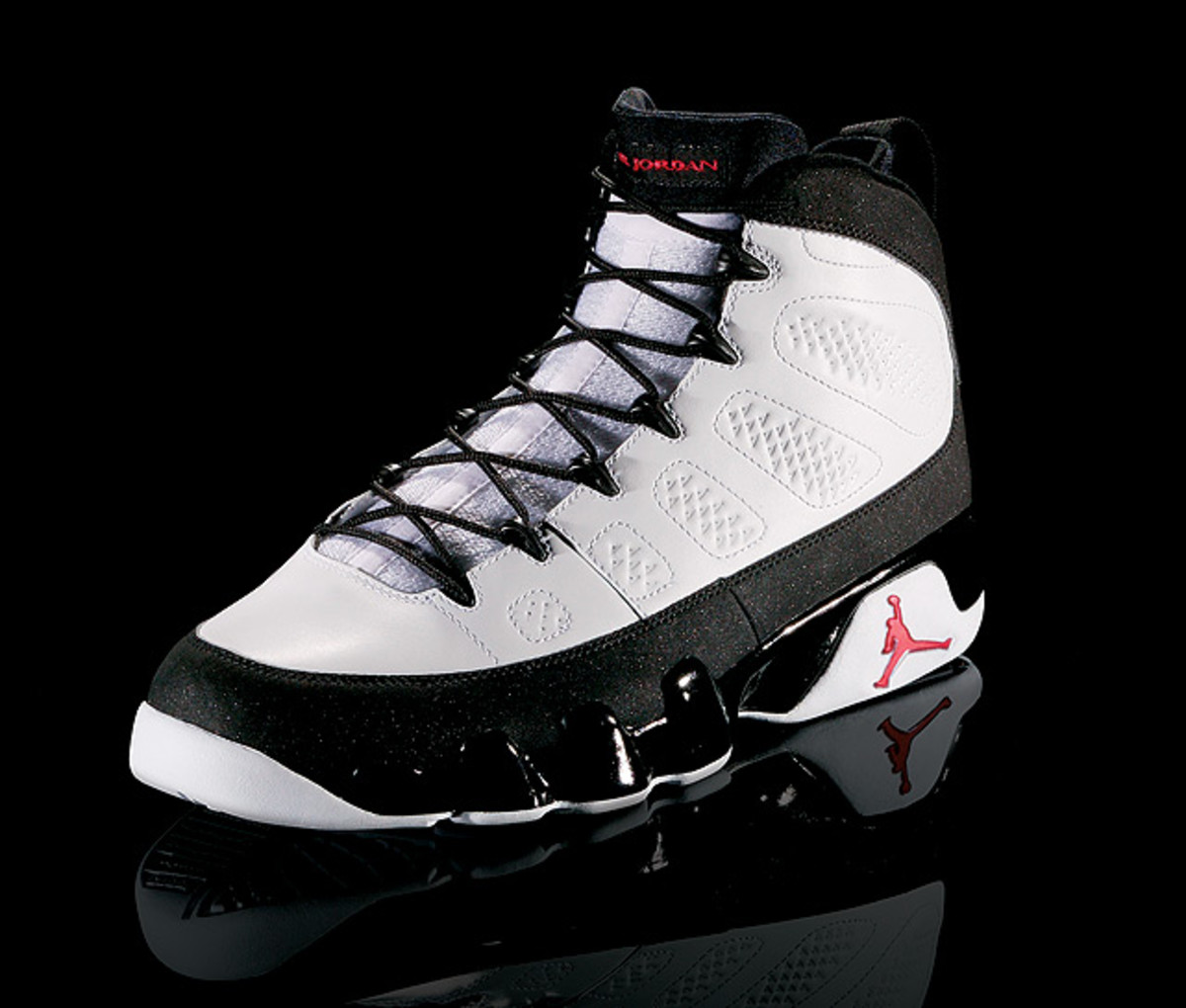
The first model released after Jordan's retirement from the NBA in 1993, the Air Jordan IXs were fitted with cleats so Jordan could wear them on the baseball diamond. The shoes adorn Jordan's feet in his statue outside of the United Center in Chicago.
Air Jordan X
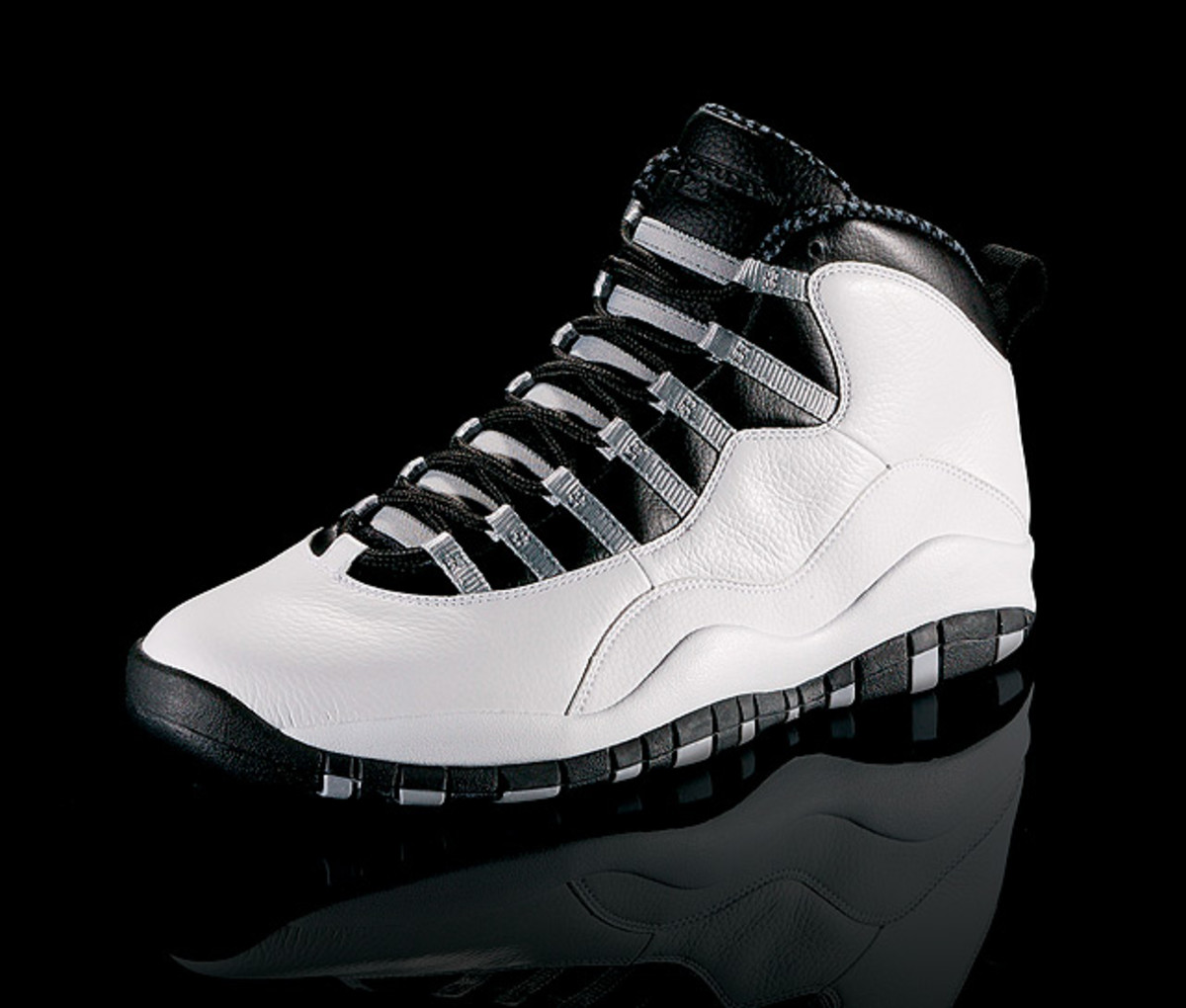
The 10th Air Jordan model celebrated Jordan with a unique outsole that featured all of his major achievements in the NBA.
Air Jordan XI
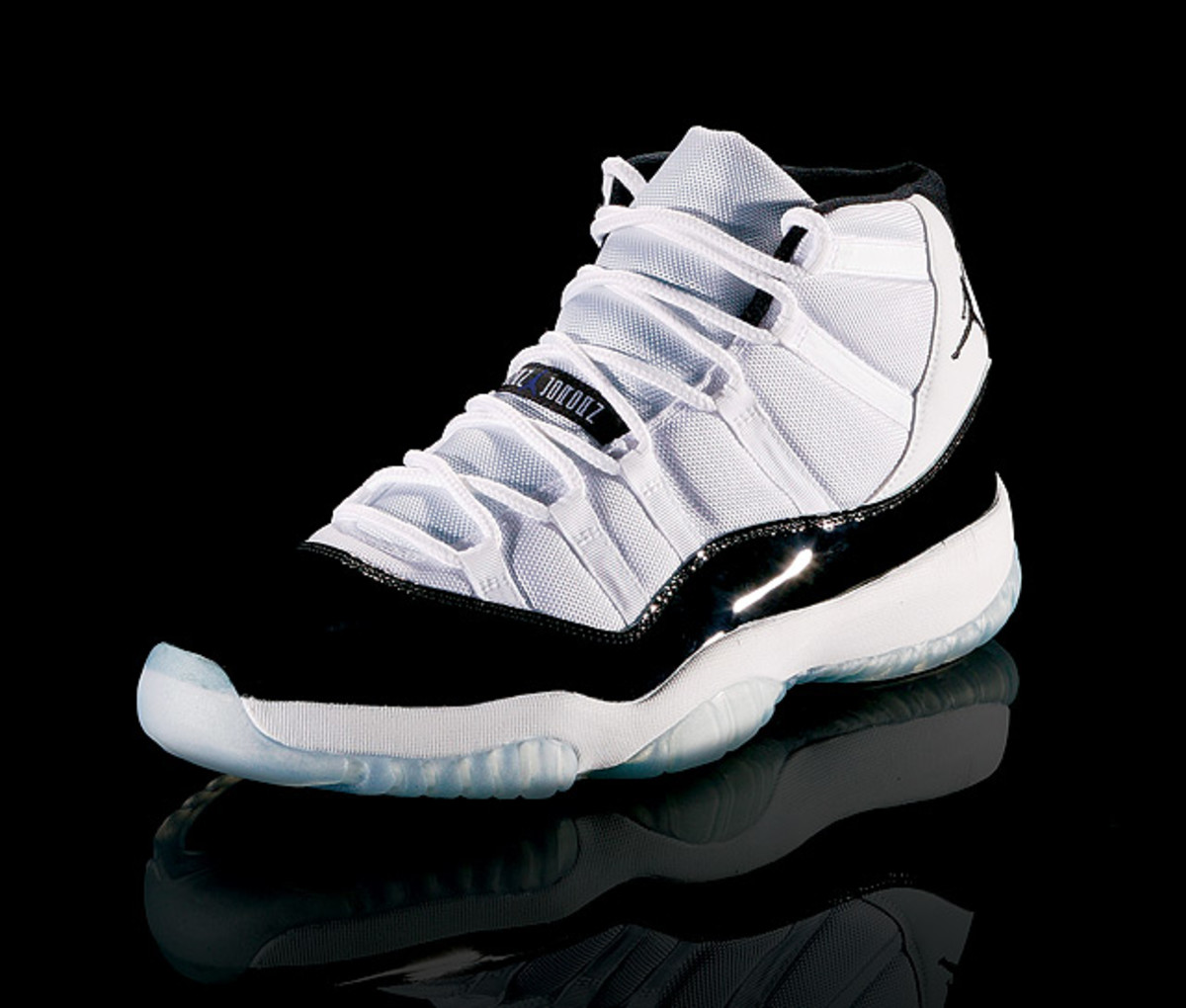
In his first full NBA season since retiring in 1993, Jordan wore the Air Jordan XI, a timeless model featuring a patent leather design.
Air Jordan XII
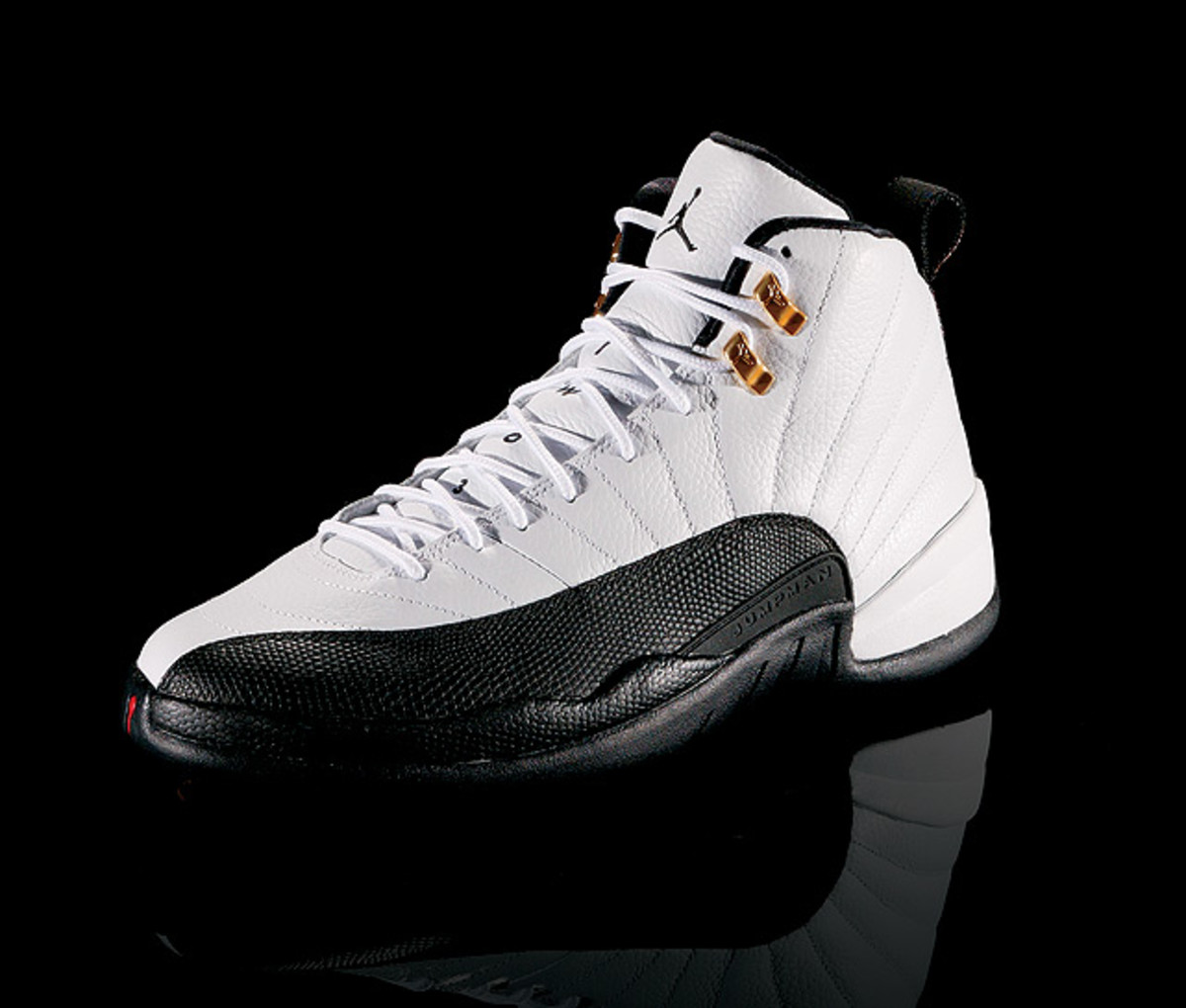
Jordan wore the Air Jordan XIIs, a model inspired by a 19th century dress boot, during the infamous "Flu Game" in 1997.
Air Jordan XIII
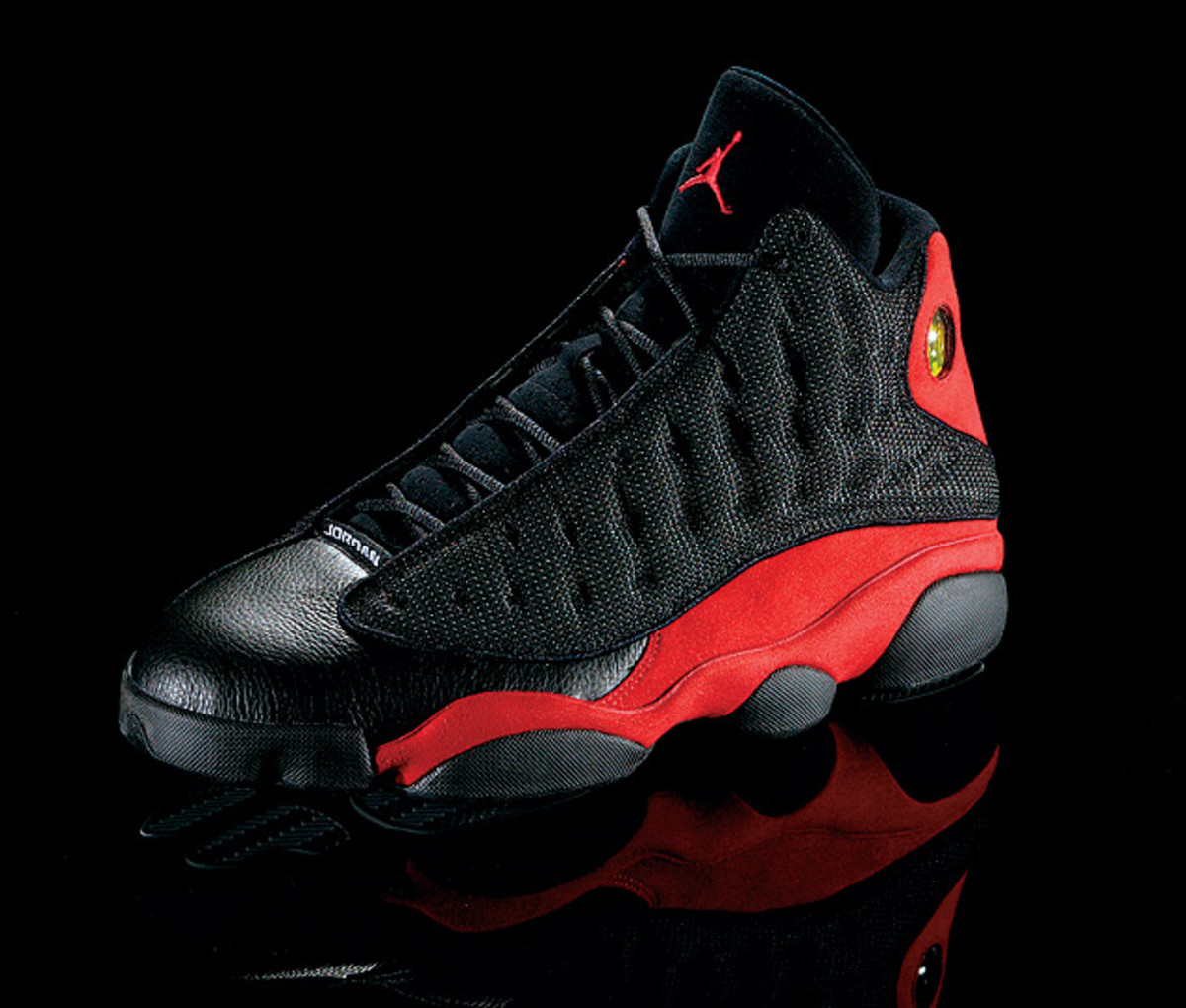
The Air Jordan XIII, nicknamed the "Black Cat", mirrors the padding on a panther's paw and features a hologram panther's eye. Jordan wore the shoes as he completed his record 10th scoring title and his second three-peat.
Air Jordan XIV
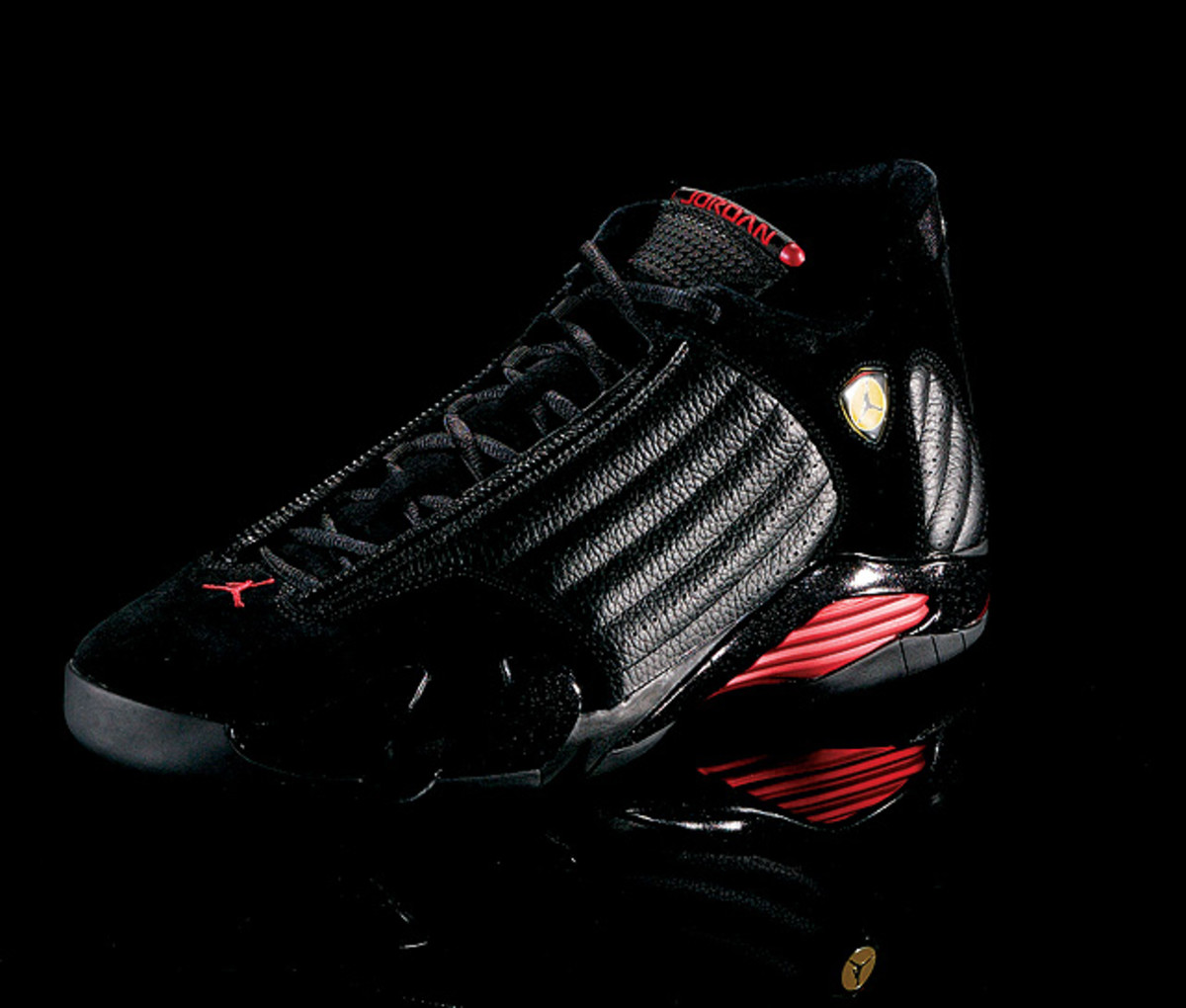
The aerodynamic lines and mesh vents of the Air Jordan XIV drew inspiration from Jordan's Ferrari.
Air Jordan XV
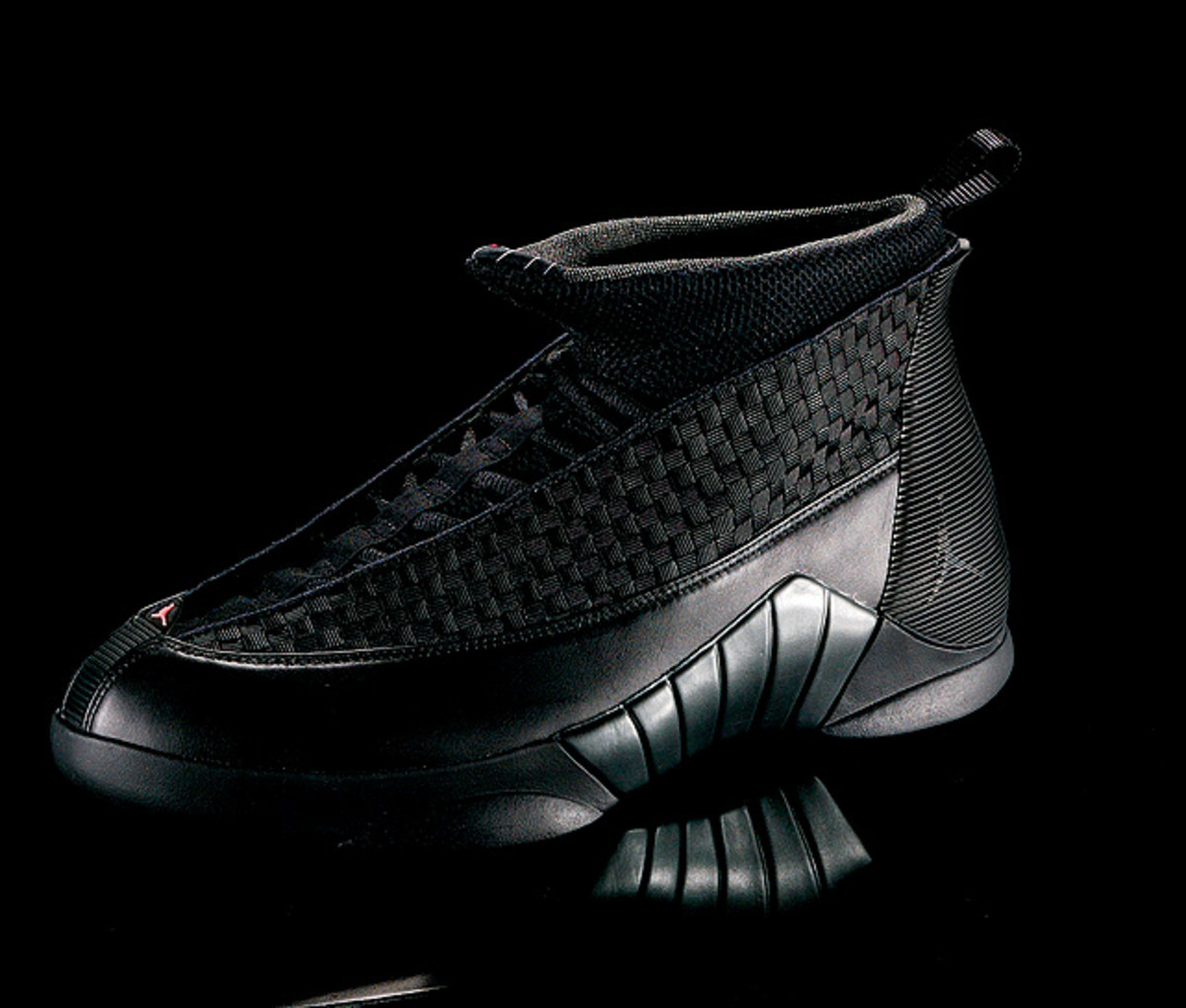
The first shoe released after Jordan's second retirement, the Air Jordan XV was worn by Reggie Miller in the 2000 Finals.
Air Jordan XVI
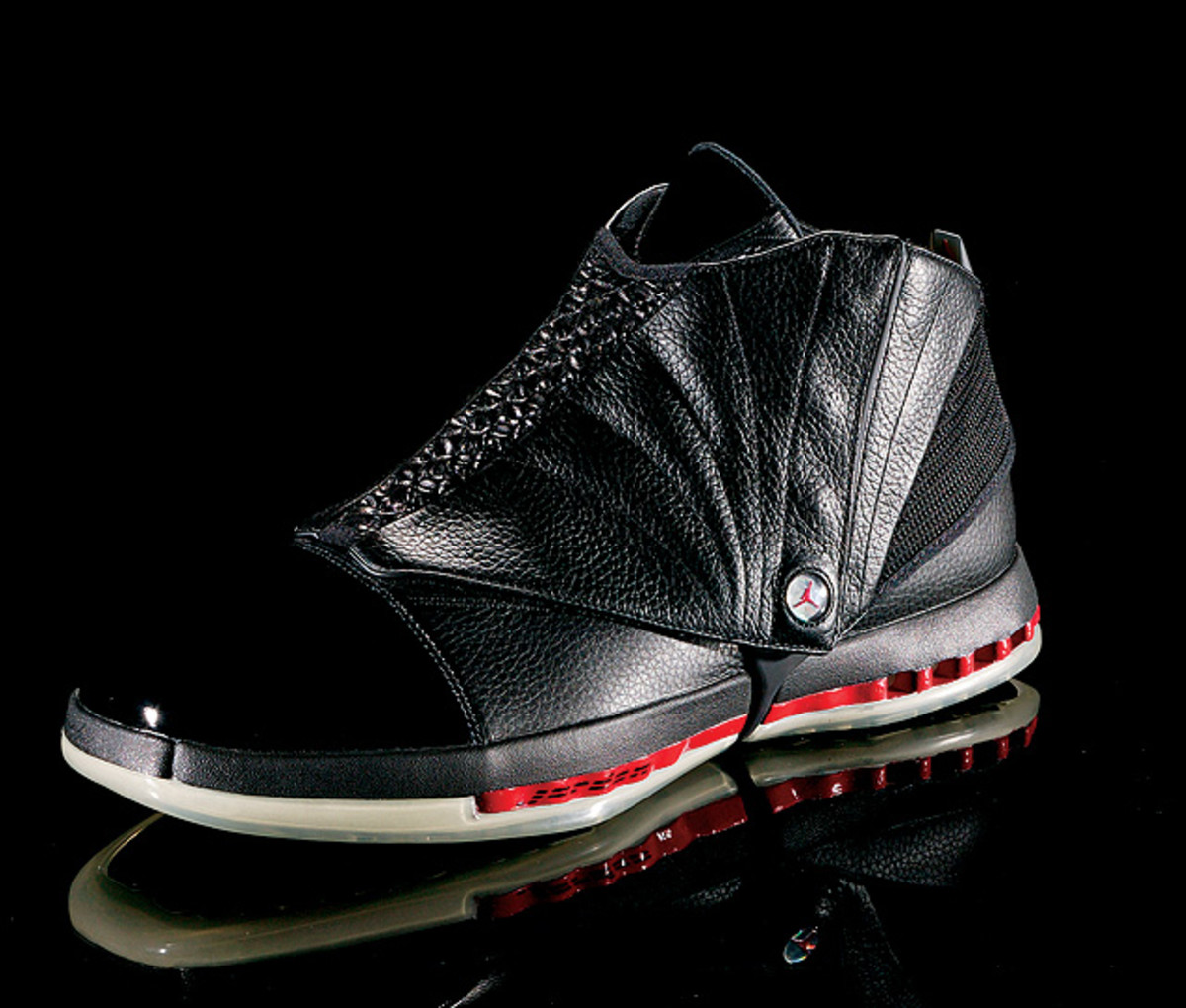
With Jordan transitioning to a role in the front office, Nike added a distinctive off-court shroud to the Air Jordan XVI.
Air Jordan XVII
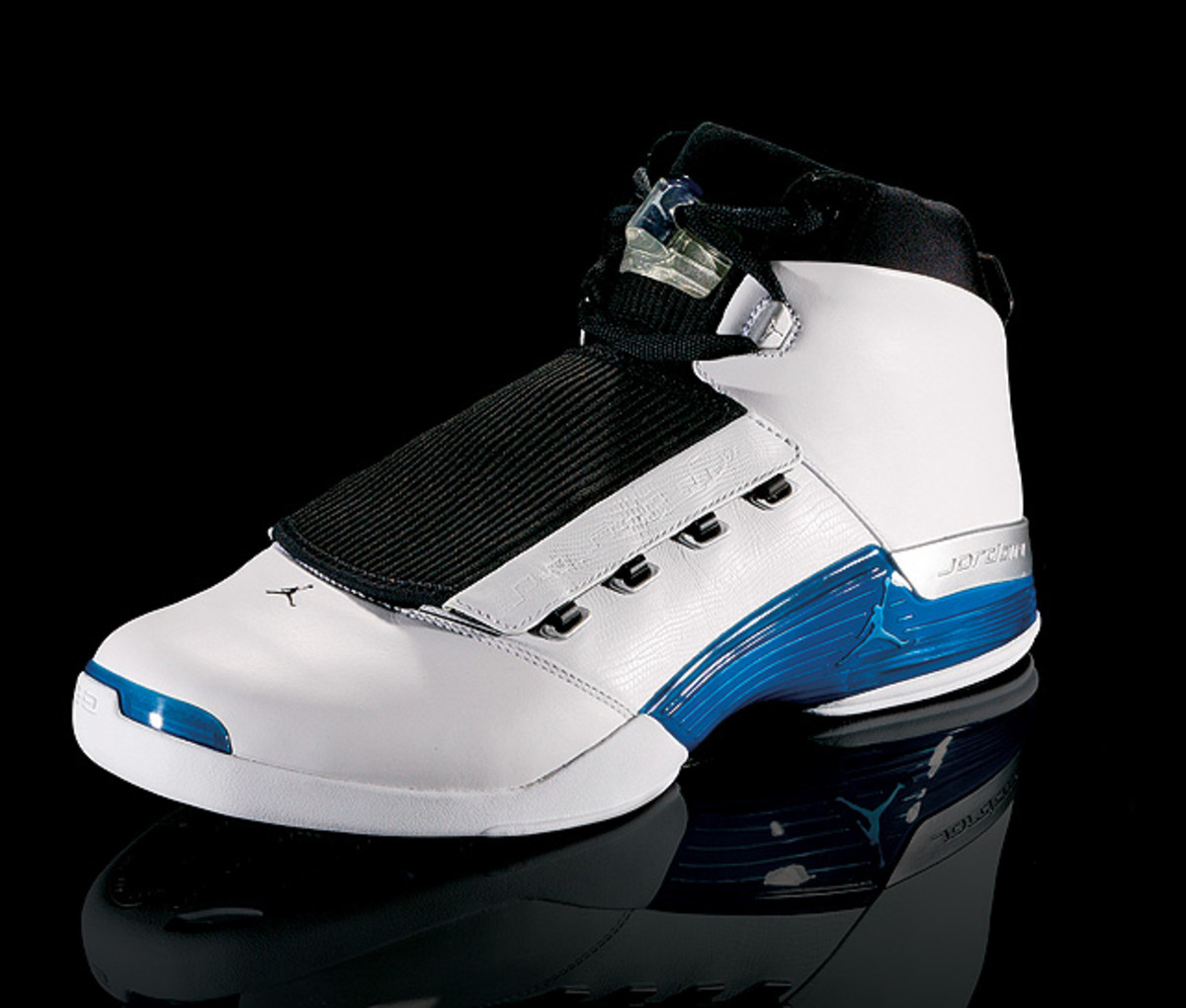
The jazz-themed Air Jordan XVII paid tribute to Jordan's love of golf with a sole design based on a golf course.
Air Jordan XVIII
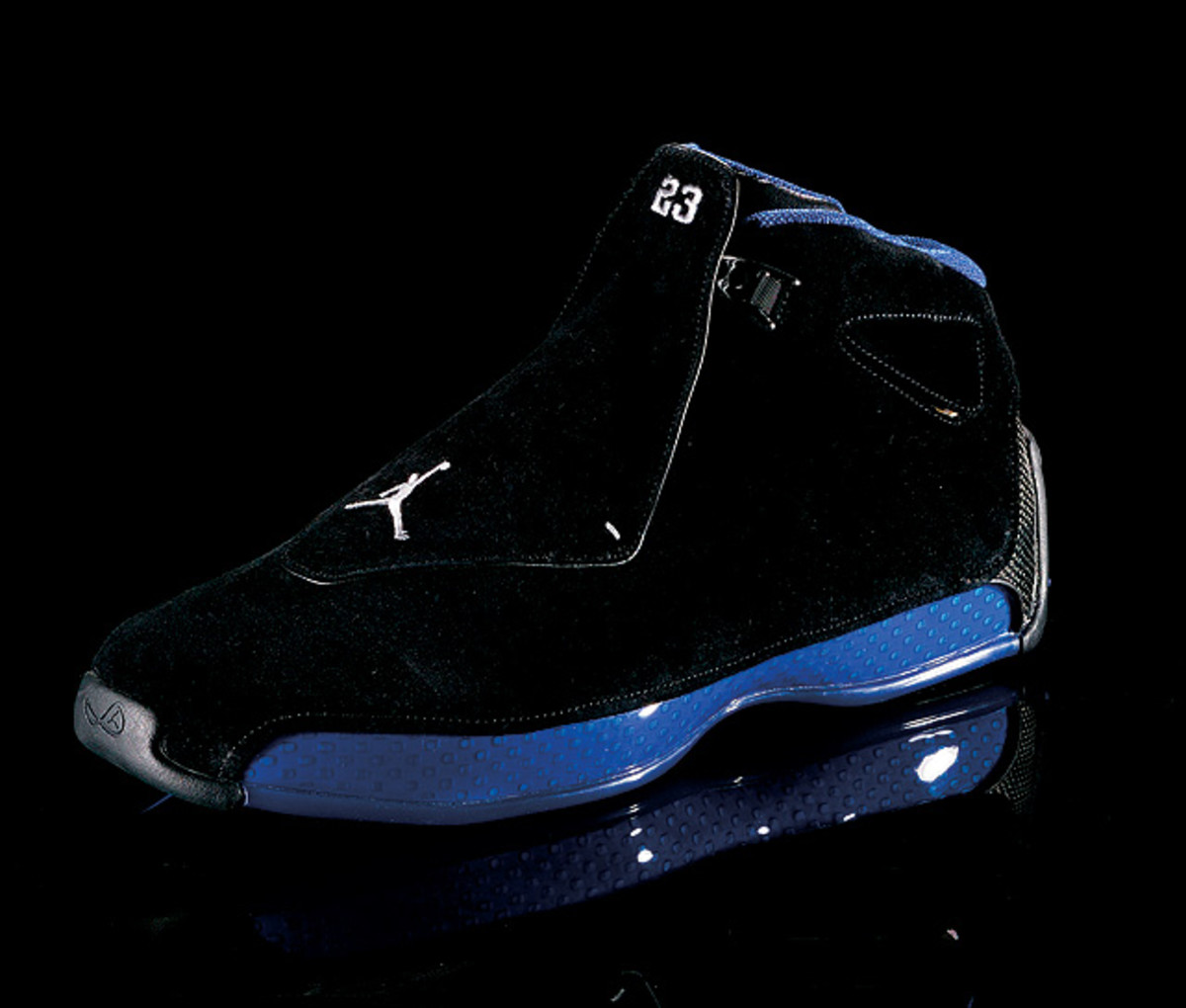
Jordan wore the Air Jordan XVIIIs, which came with a towel, brush and "Driver's Manual", during his last game in the NBA on April 16, 2003.
Air Jordan XIX
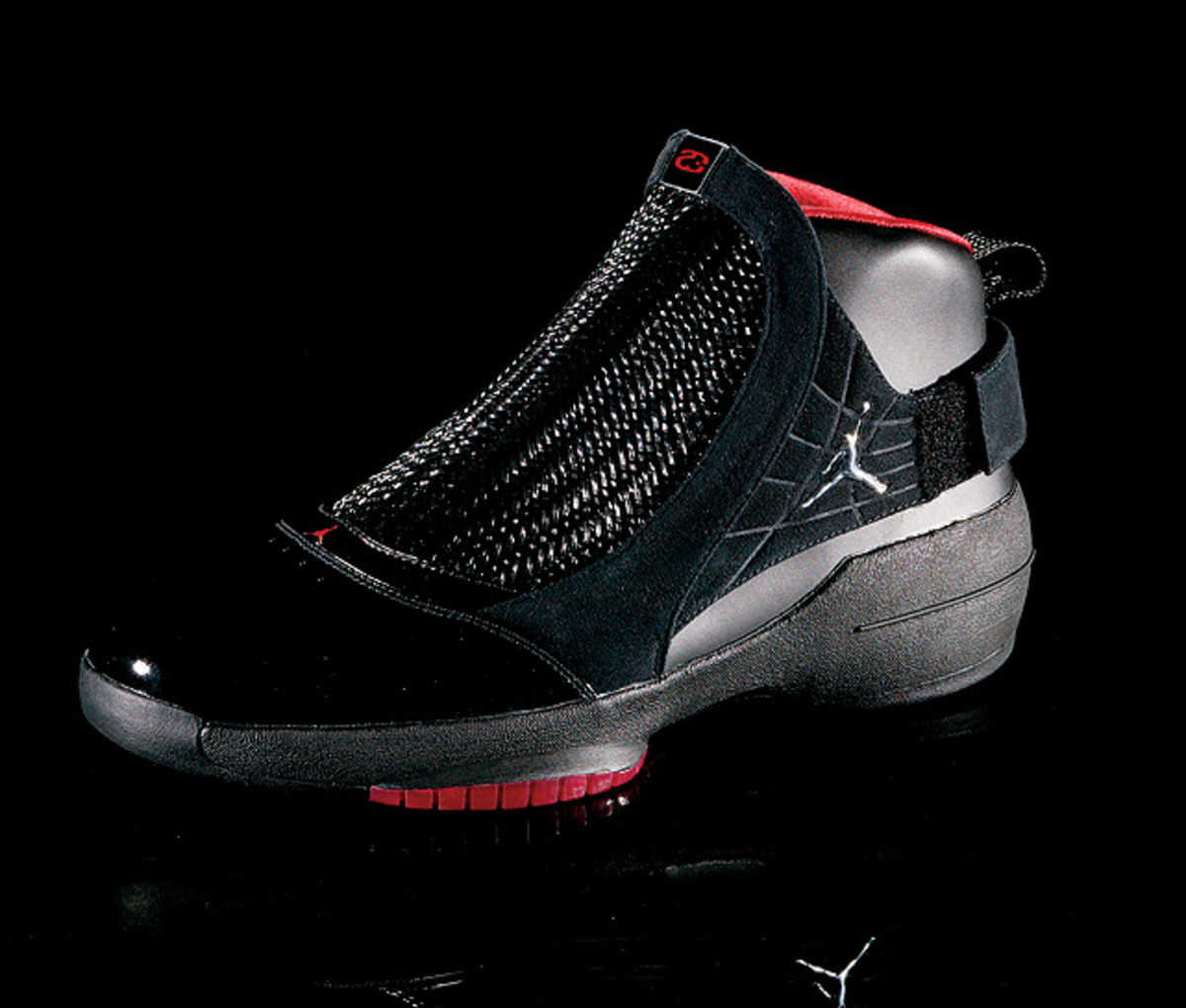
The lightest Air Jordans ever made, the Air Jordan XIXs were the first shoe released after Jordan's third and final retirement in 2003.
Air Jordan XX
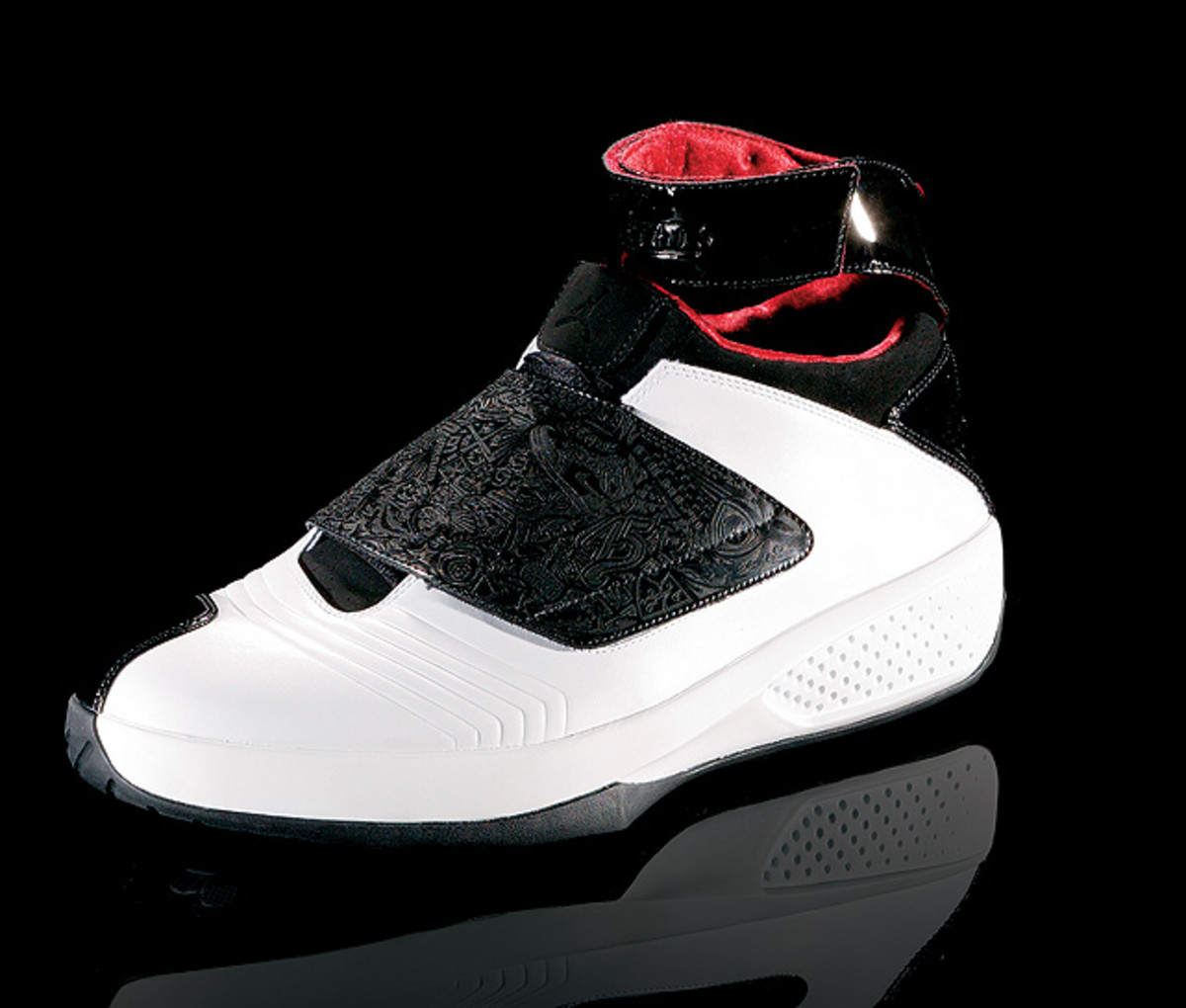
Nike celebrated the 20th anniversary of Air Jordan with the Air Jordan XX, a shoe featuring a laser-etched upper panel celebrating Jordan's life.
Air Jordan XX1
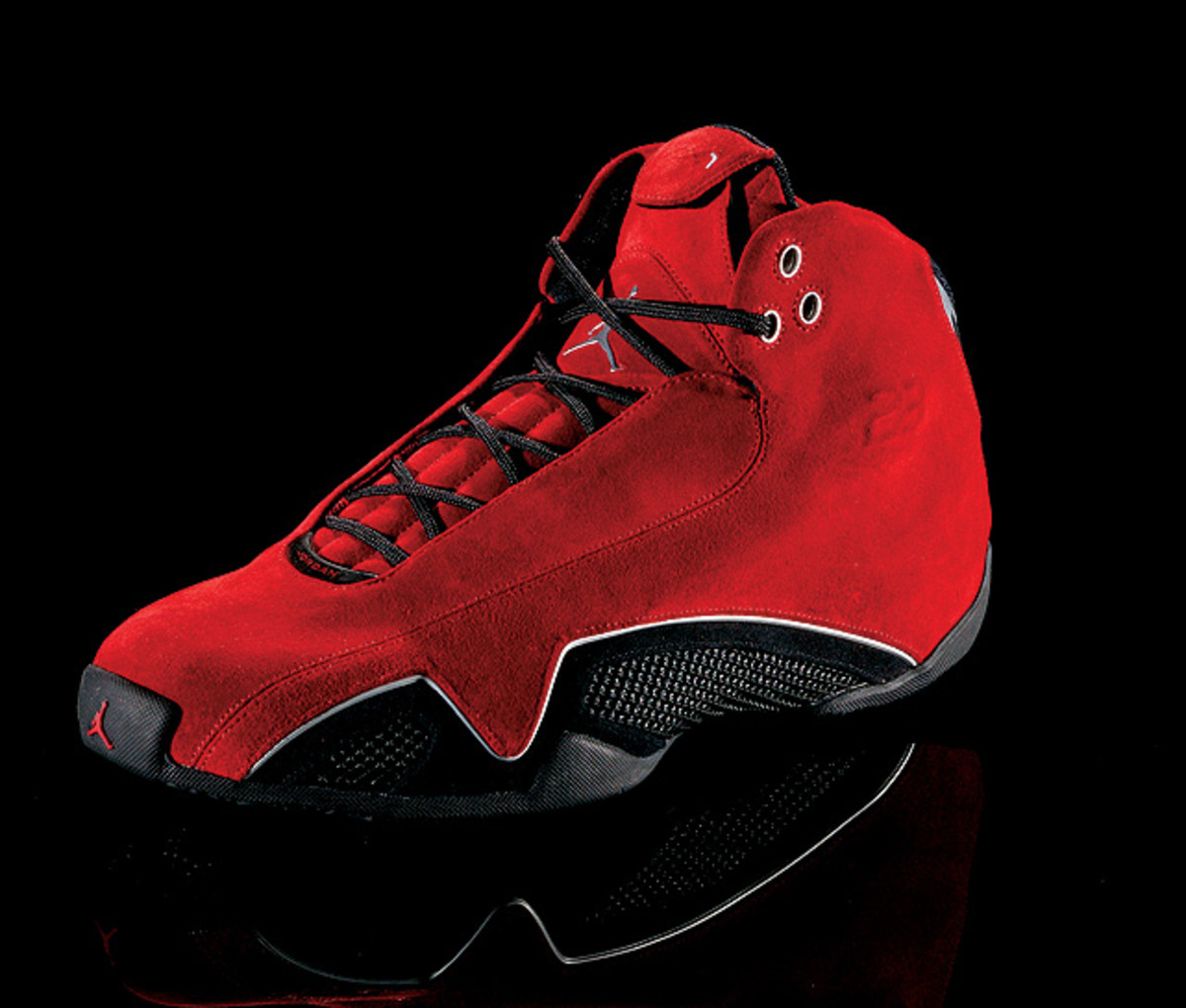
Released in 2006, the Air Jordan XXI was inspired by the Bentley Continental GT Coupe, featuring lower-foot air grilles and a carbon fiber shank plate.
Air Jordan XX2
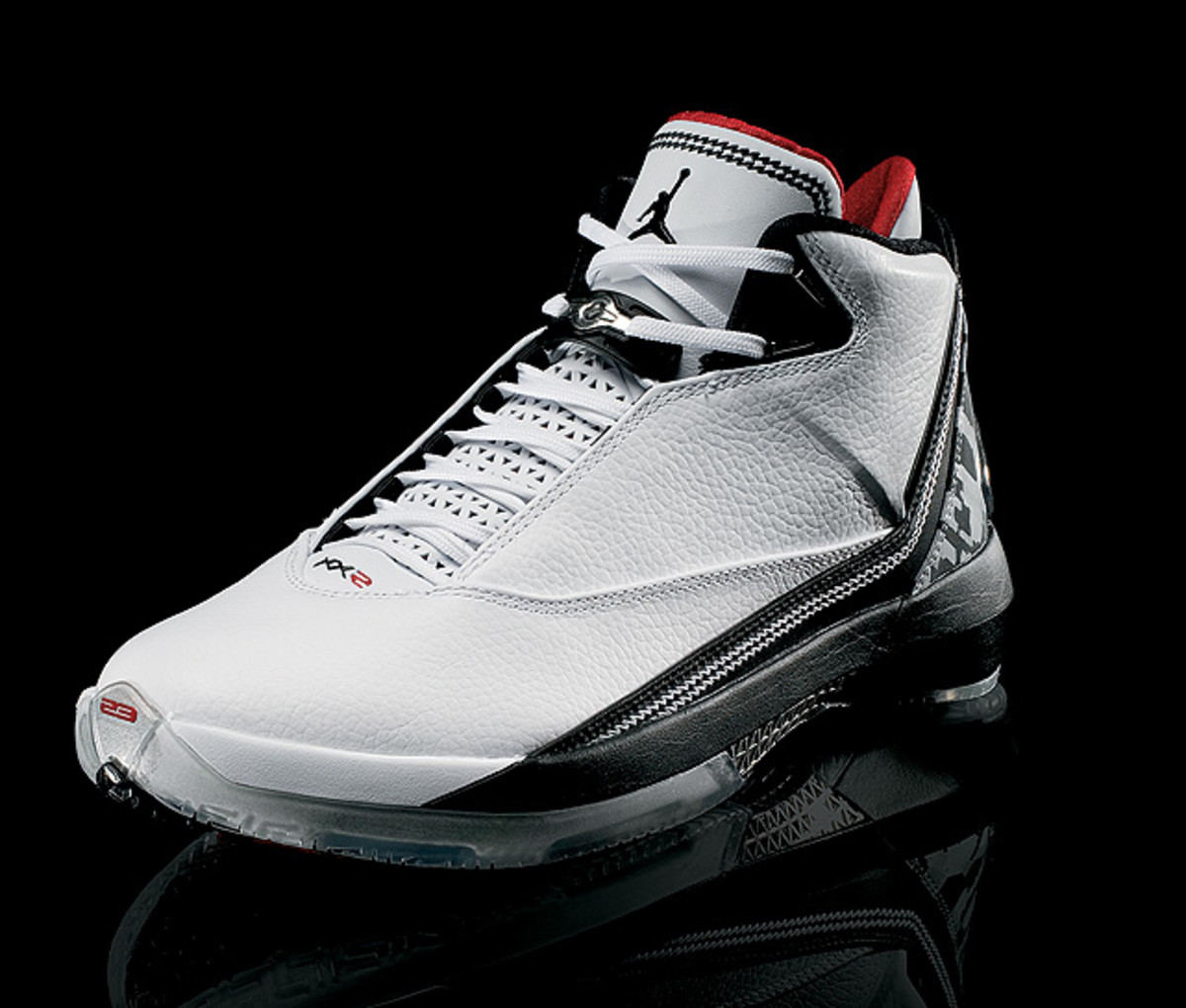
The aggressive "radar" stitching and camouflage patterns of the Air Joran XX2 pay homage to the F22 Raptor jet fighter.
Air Jordan XX3
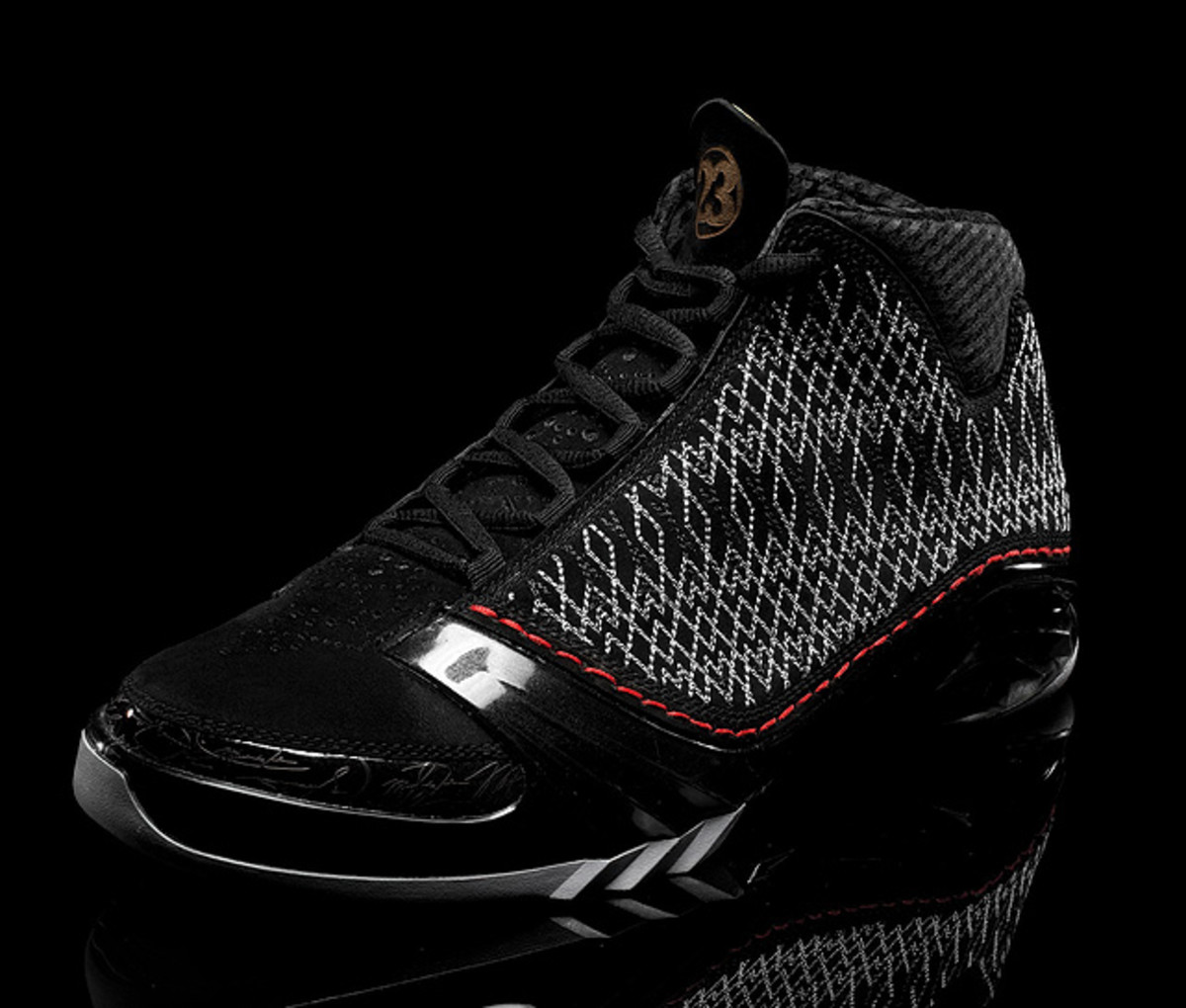
The Air Jordan XX3 bears a unique hand-stitched exterior, a full-length bootie and articulated chassis.
Jordan 2009
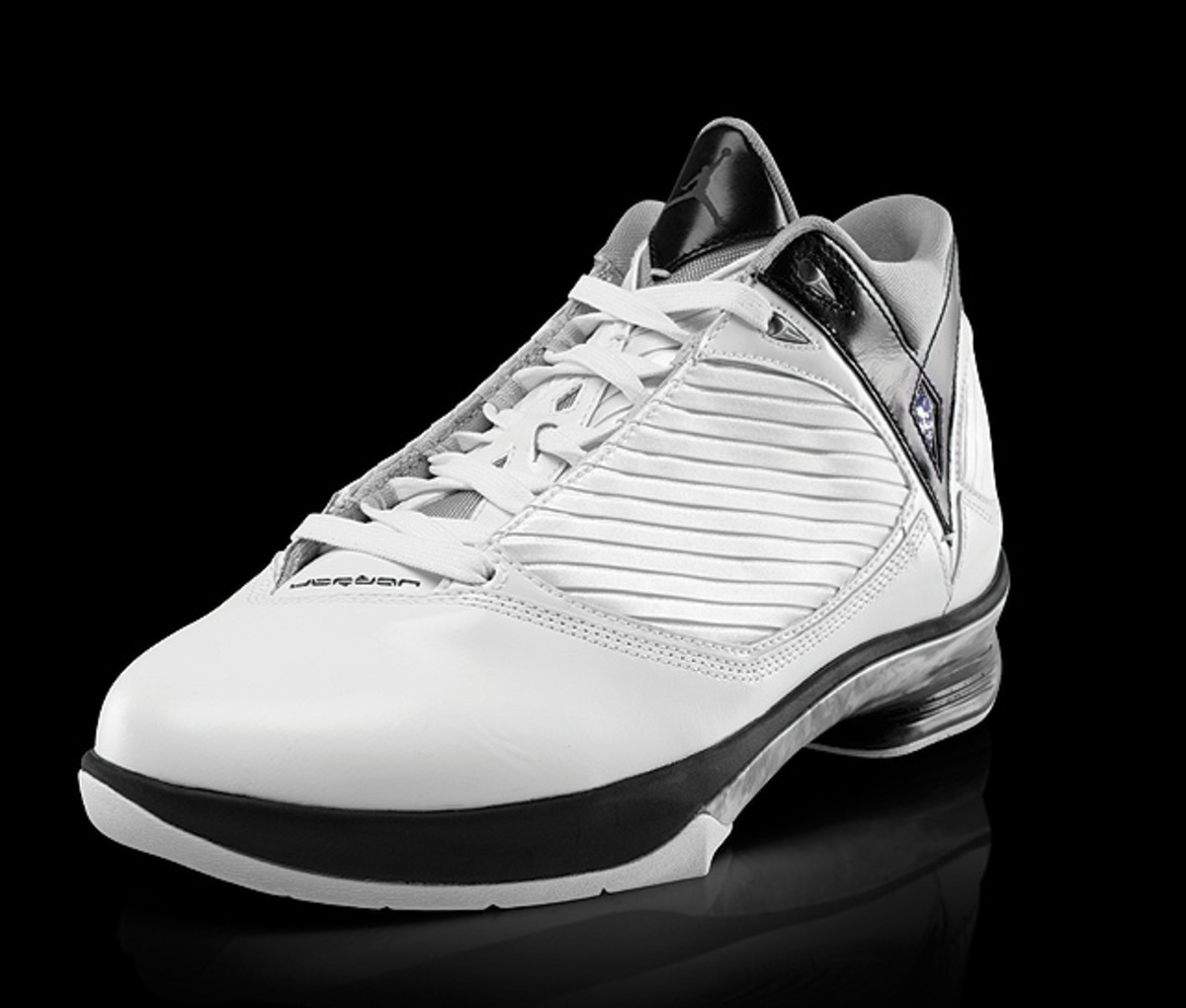
Inspired by Jordan's defensive focus, the Air Jordan 2009 uses unique technology to give players "unfair" responsiveness.
Air Jordan 2010
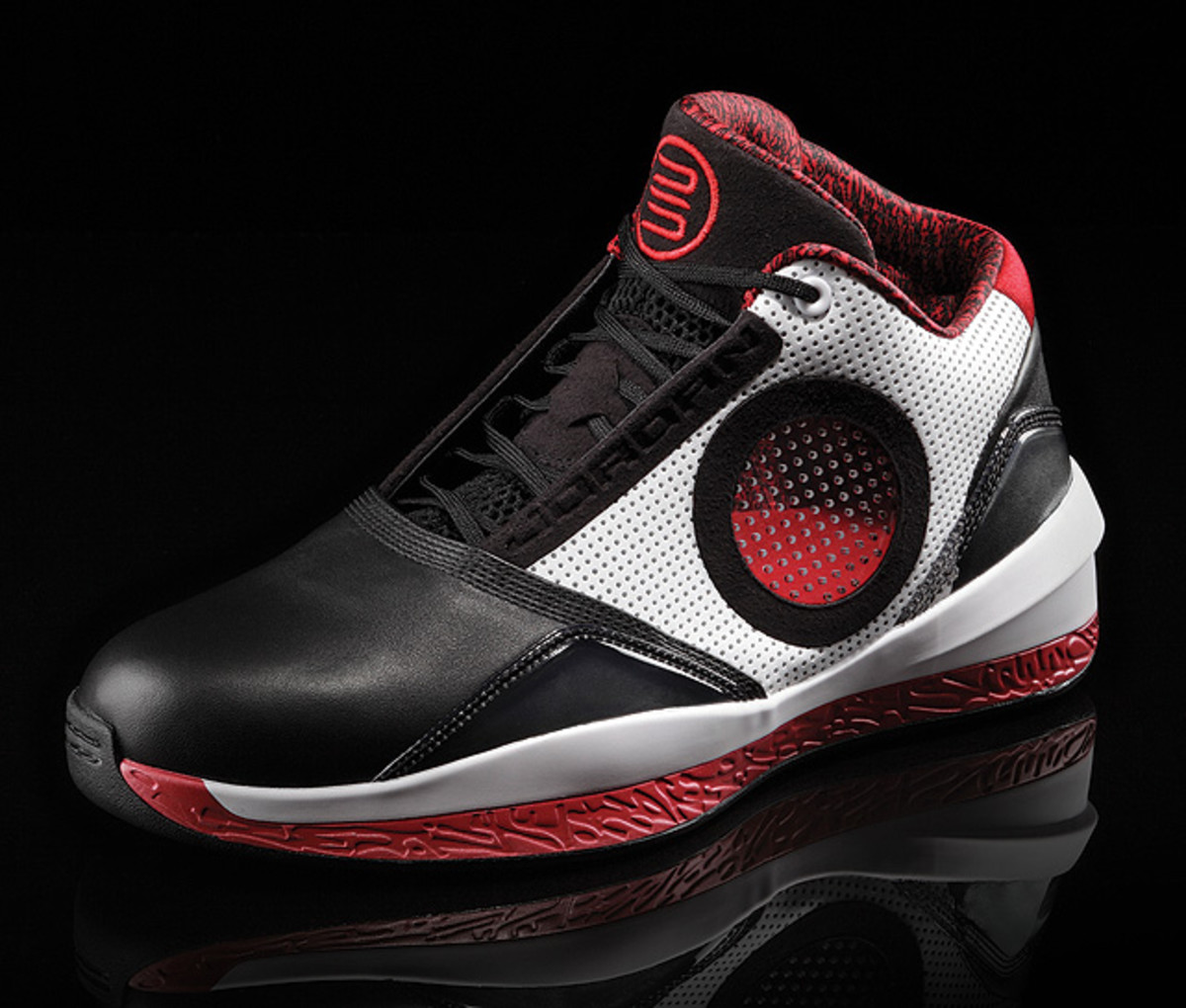
For Air Jordan's 25th anniversary Nike released the Air Jordan 2010, a shoe with a unique translucent window that reflected Jordan's ability to "see through opponents".
Air Jordan 2011
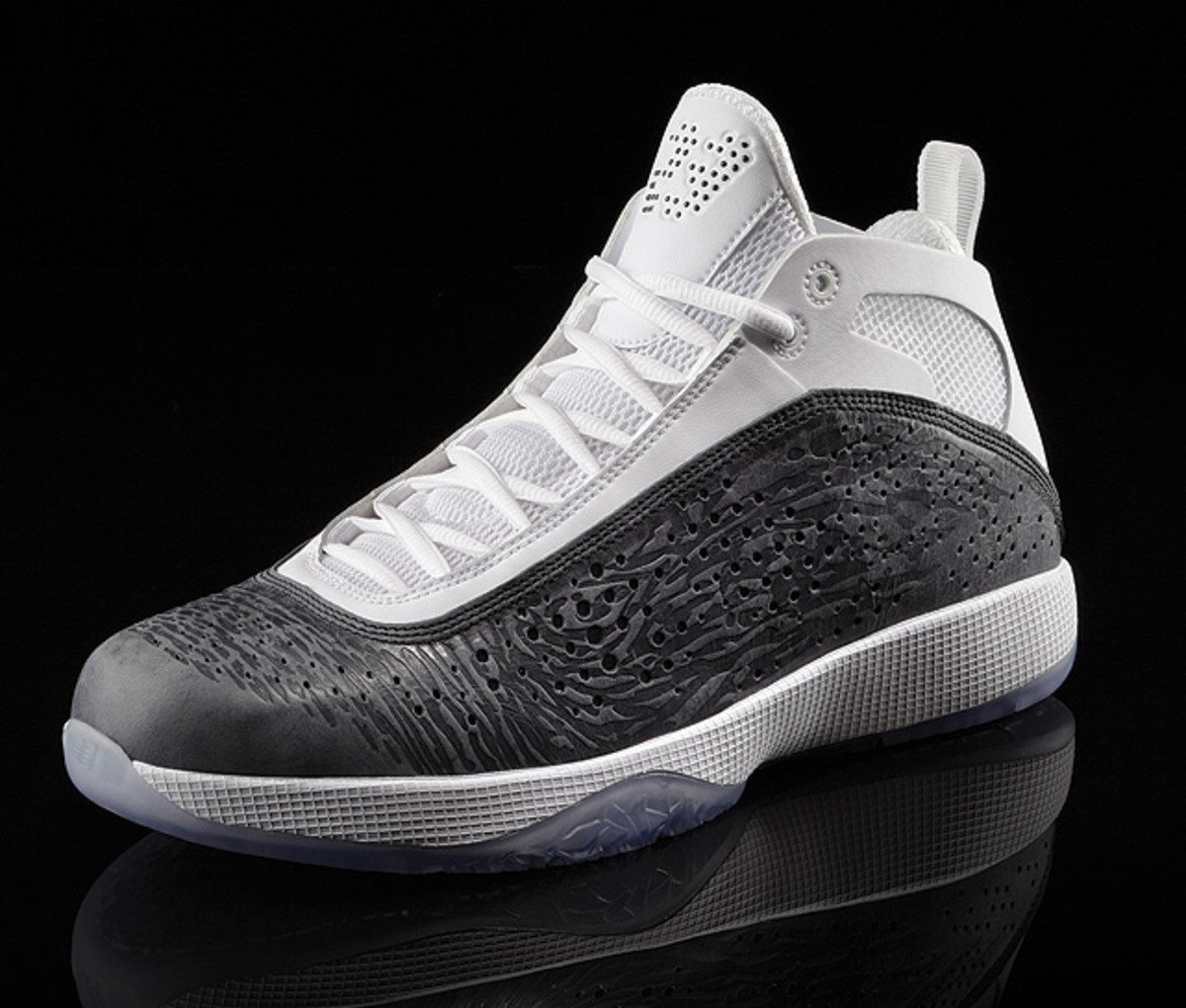
The Air Jordan 2011 featured interchangeable soles inspired by Jordan's versatile skill set.
Air Jordan 2012
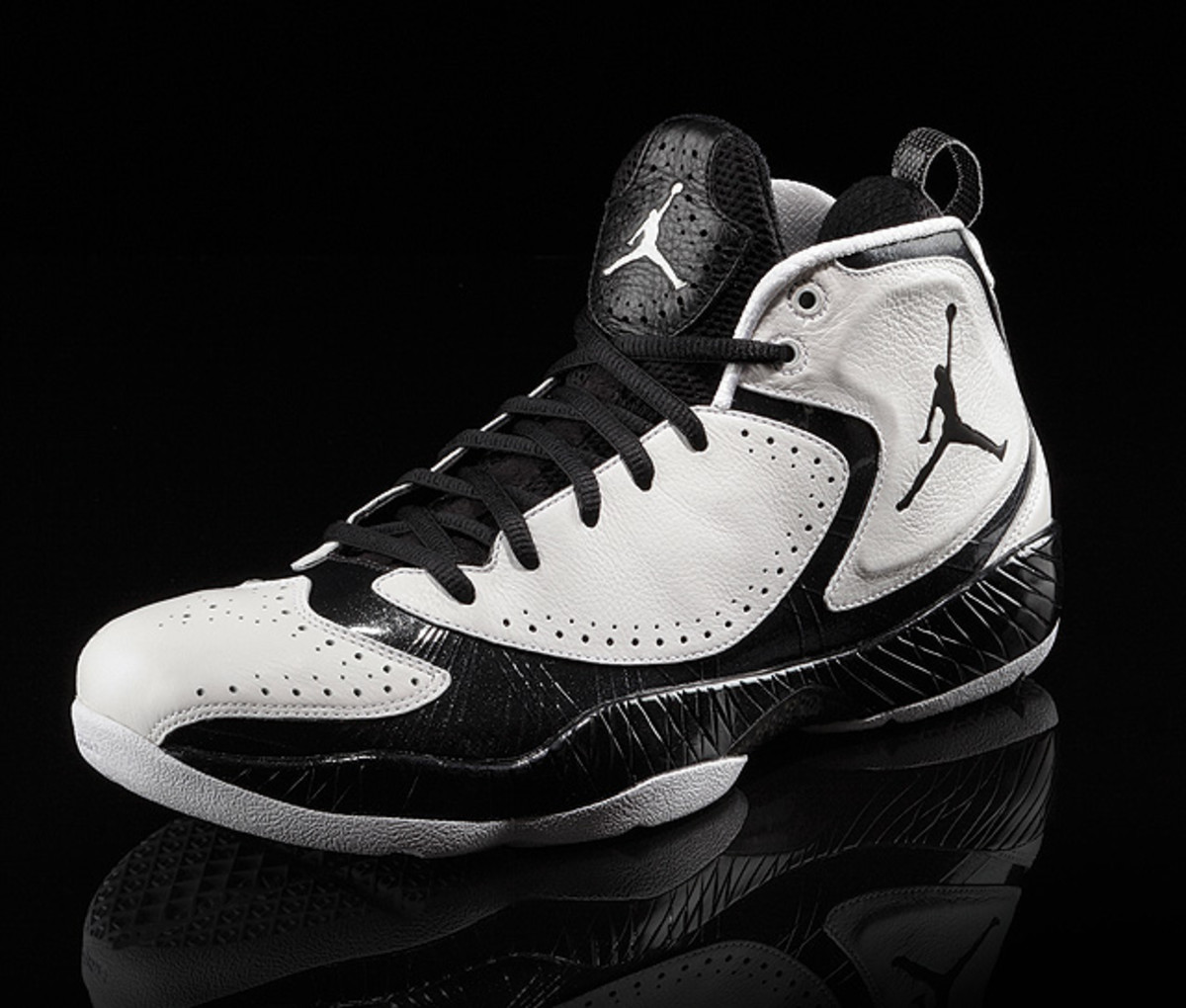
"Zoot suit" details set the Air Jordan 2012 apart, reflecting a young Jordan's brash and confident game.
Air Jordan XX8
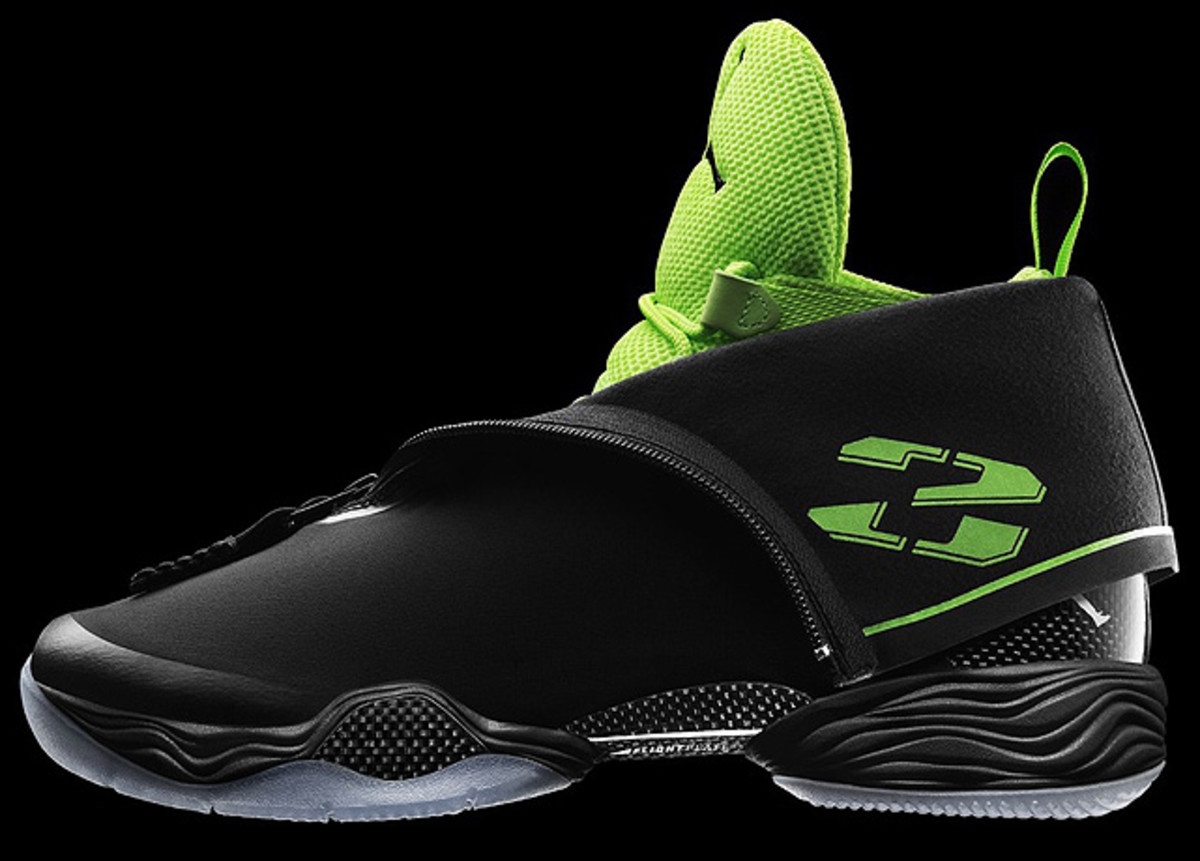
The Air Jordan XX8 features an all-black sleeve that conceals an inner neon green bootie. Inspired by stealth technology, it surpasses the XIX as the lightest Air Jordan ever made.
Air Jordan XX9
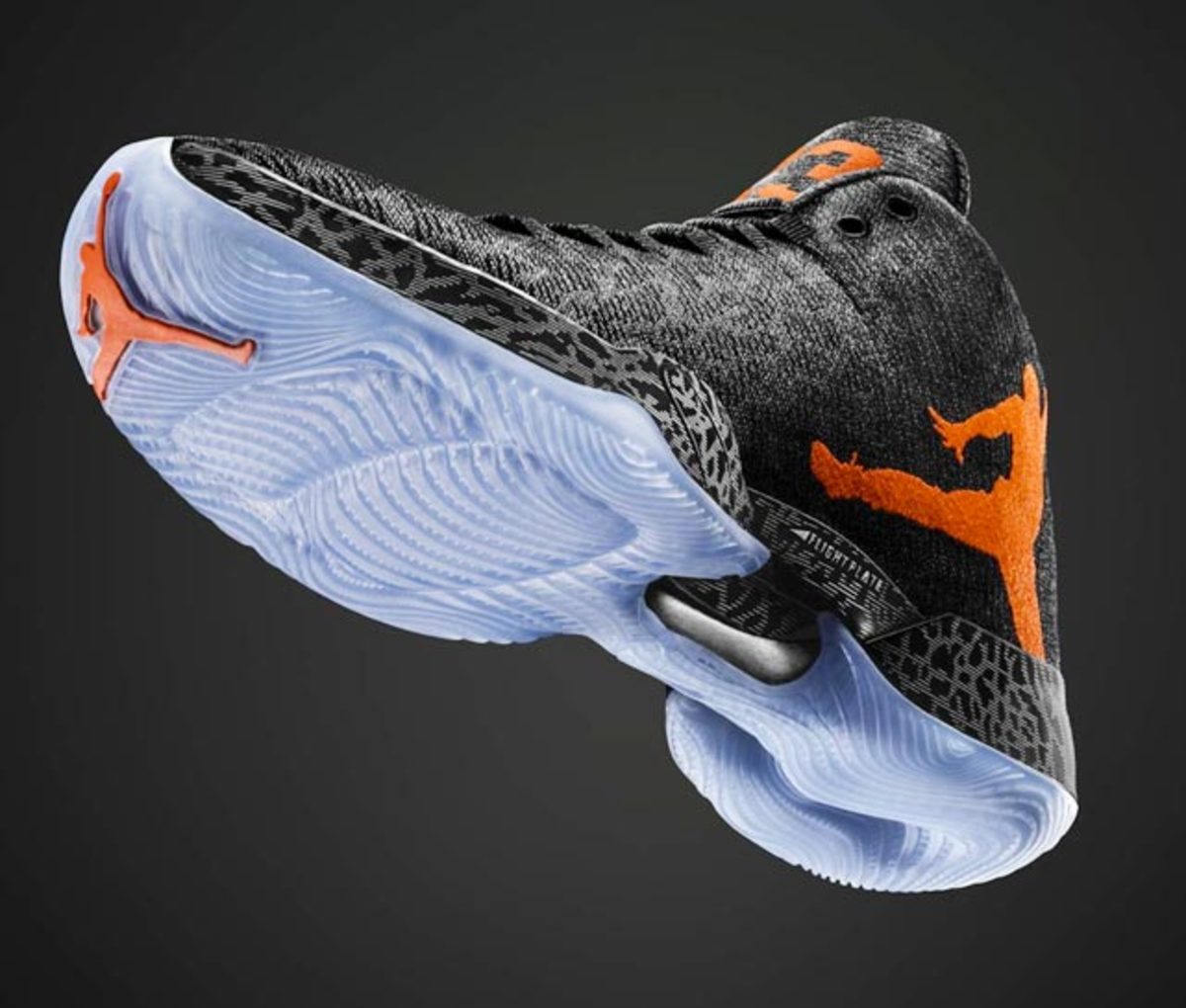
Michael Jordan worked with legendary shoe designer Tinker Hatfield to come up with the highly technical XX9, featuring everything from carbon plating and specialized air configurations to a woven upper made in Italy to give us a distinctive 23 and Jumpman-inspired aesthetic. The lightest Jordan yet goes black and red to add a little Jordan nostalgia to the mix.
Air Jordan XXX
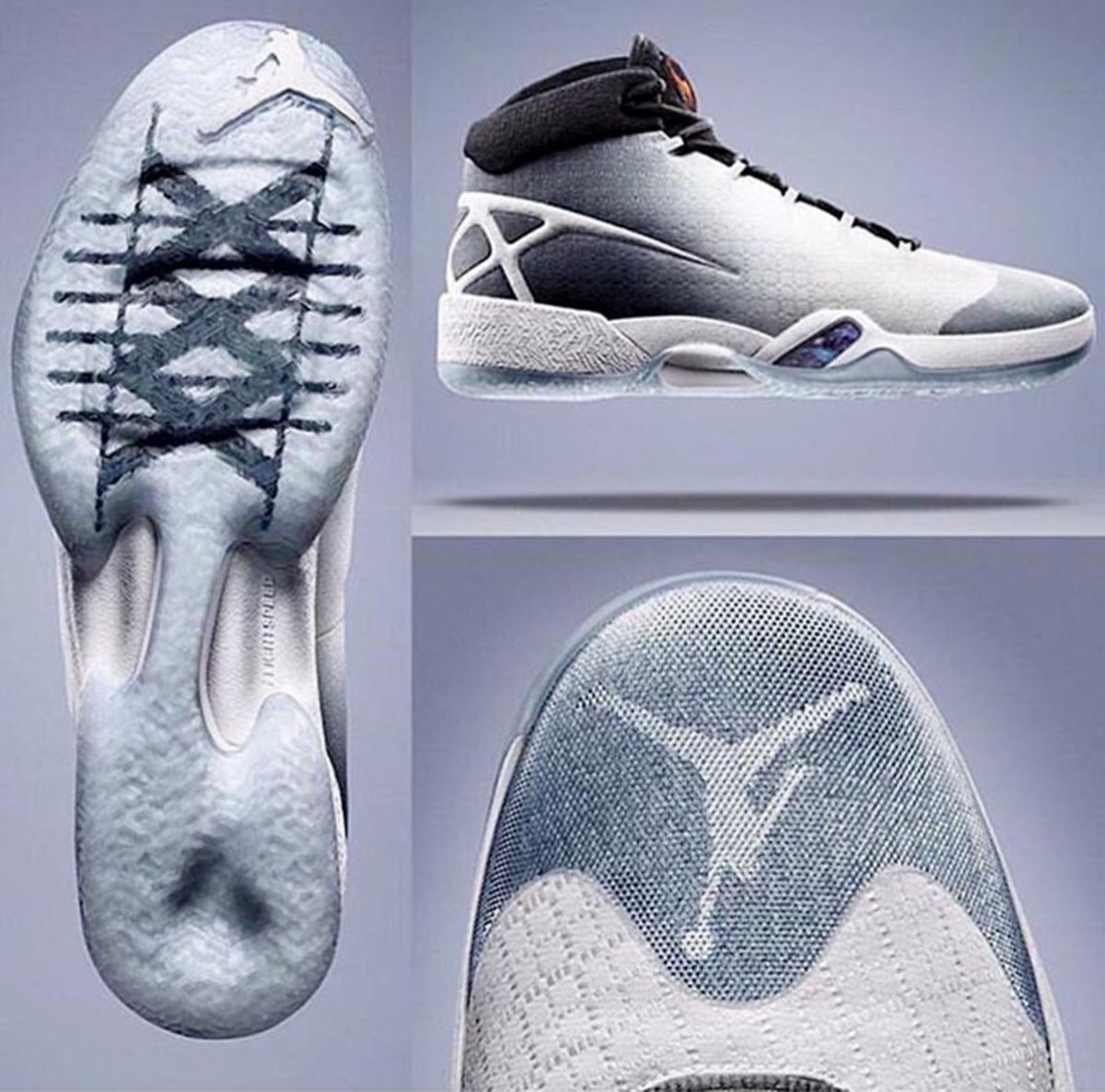
The new Air Jordan XXX is out and possesses the “XXX” branding on the heel and sole and features the Jumpman logo on the toe region. The midsole is similar to 2014’s Jordan XX9, while the upper part of the shoe has a Flyweave look.
